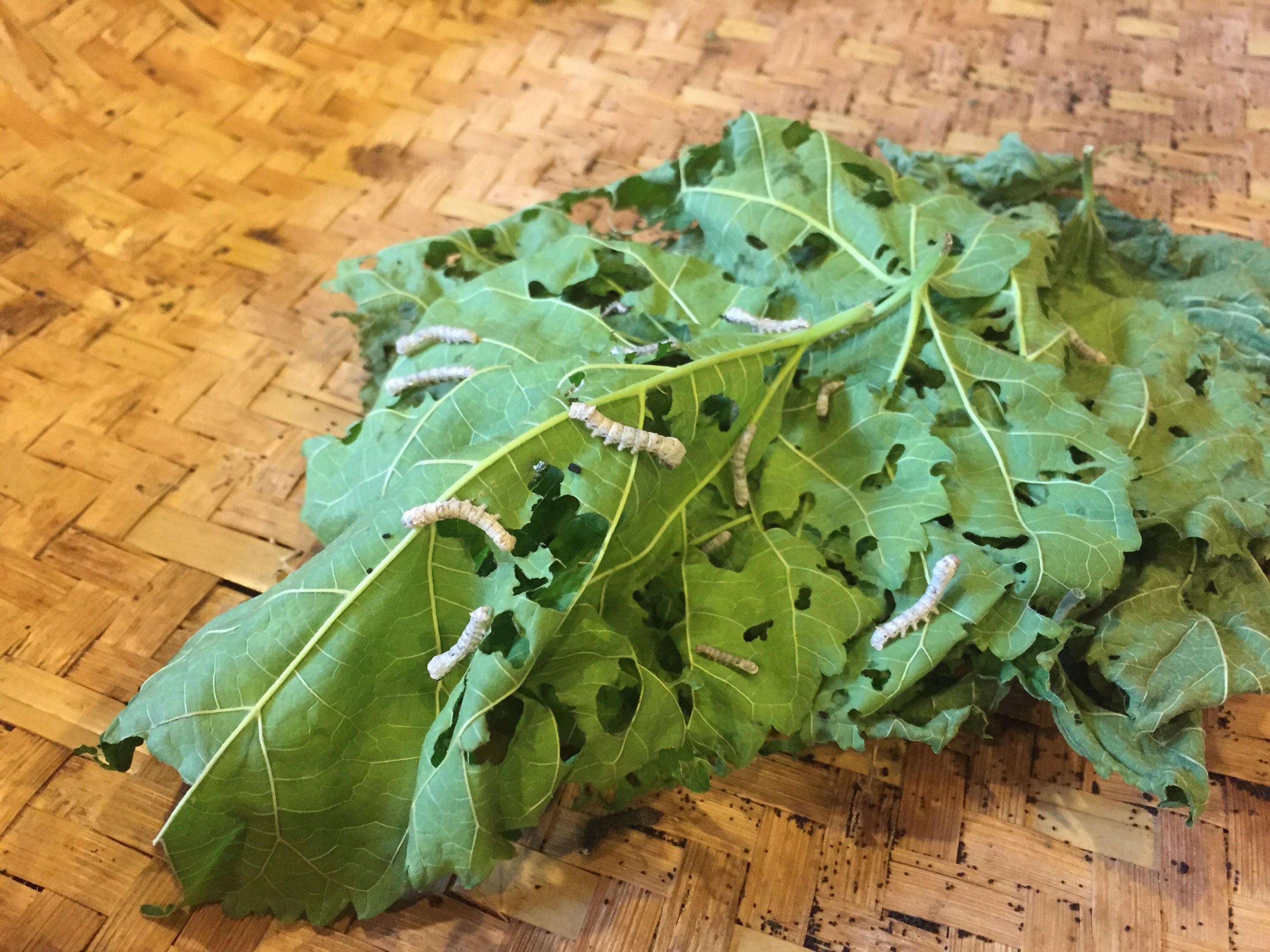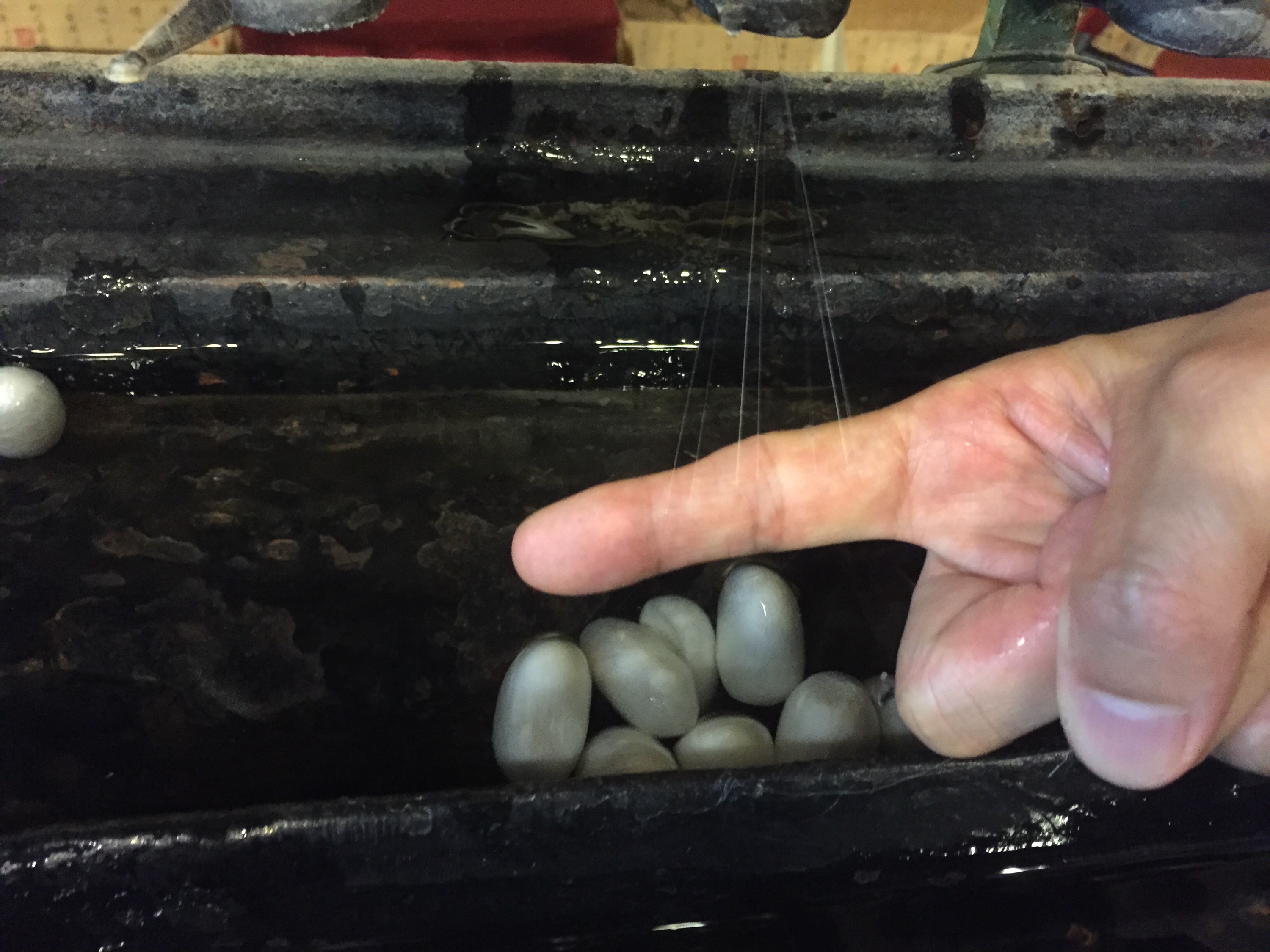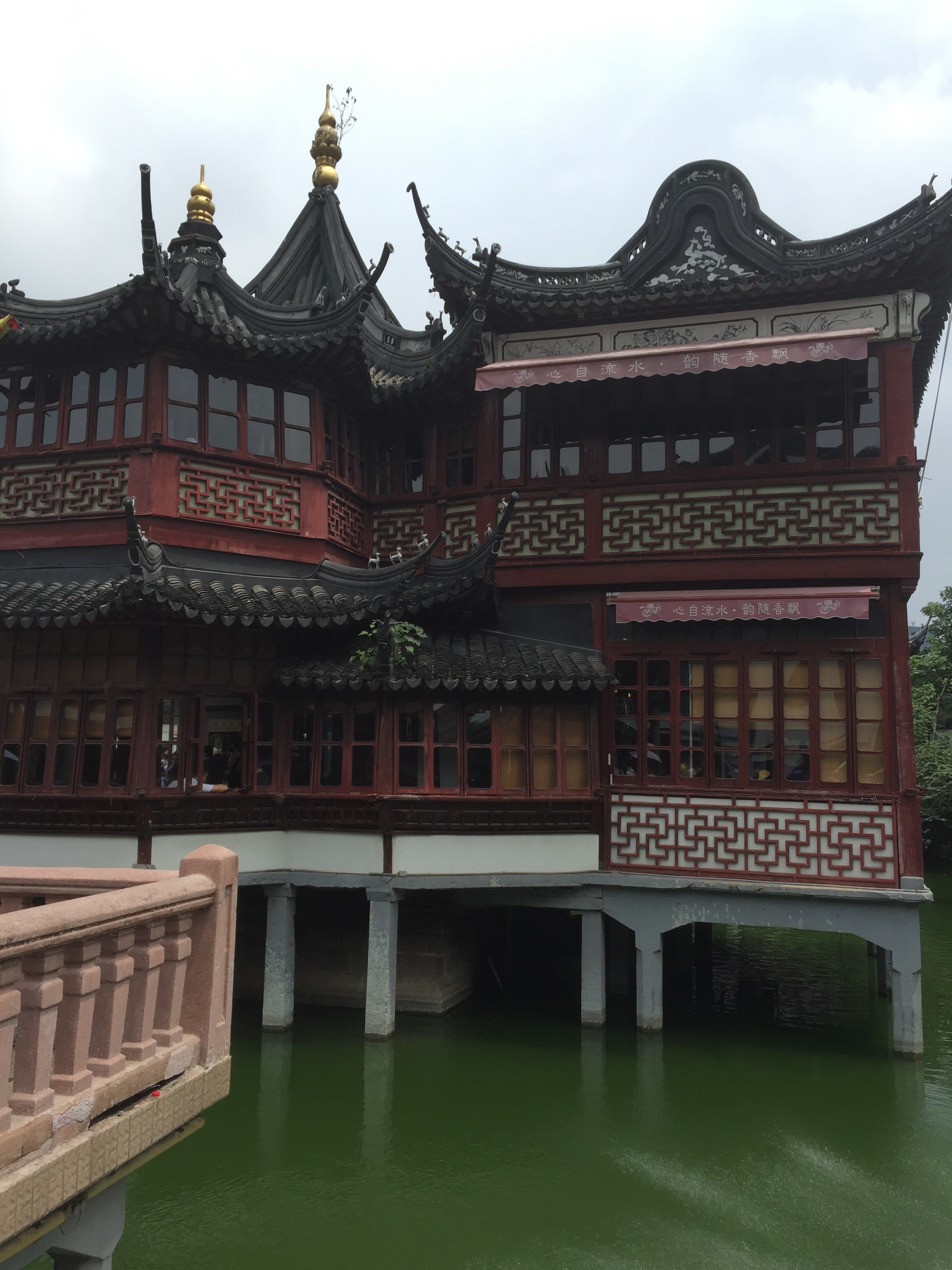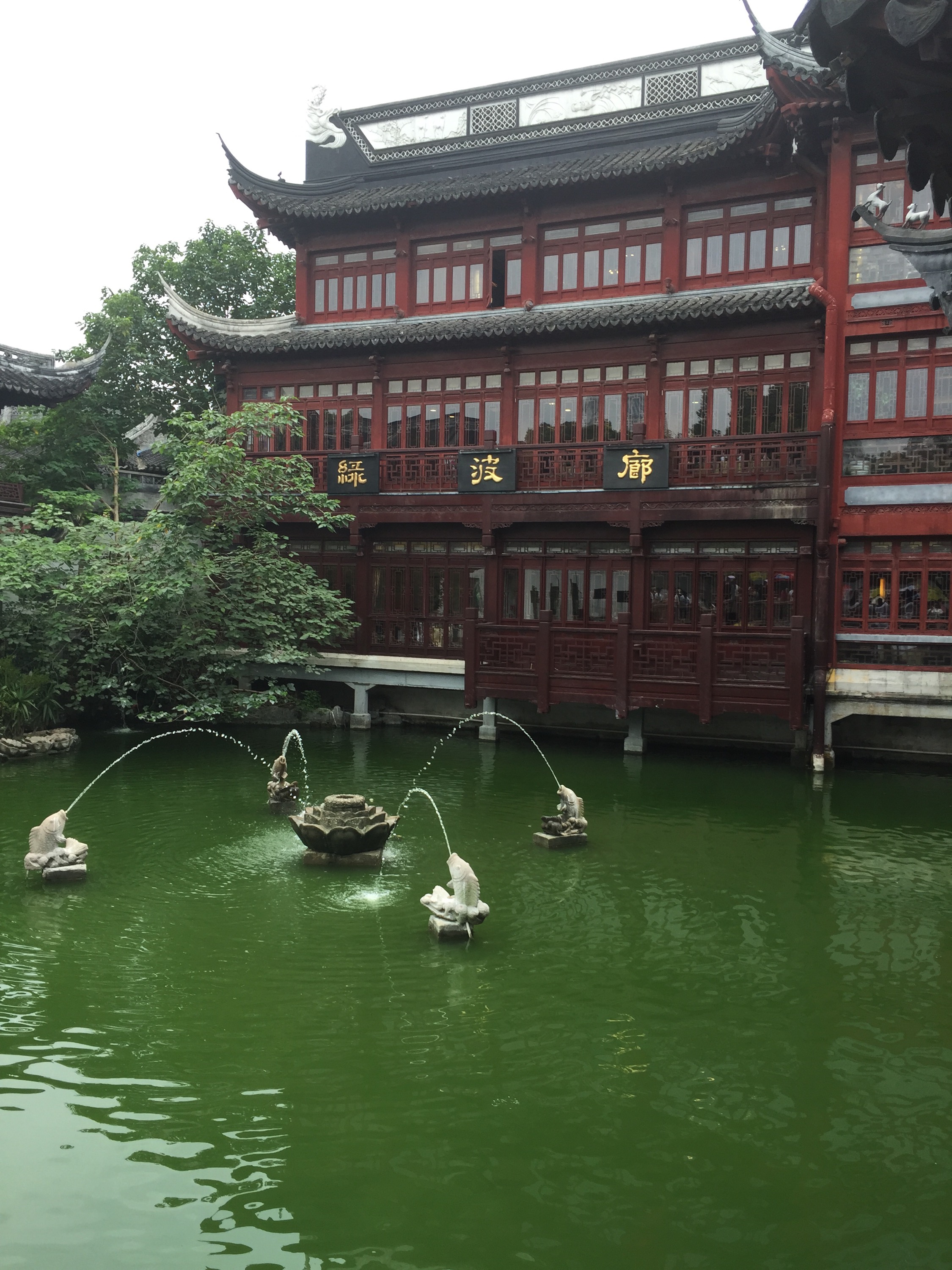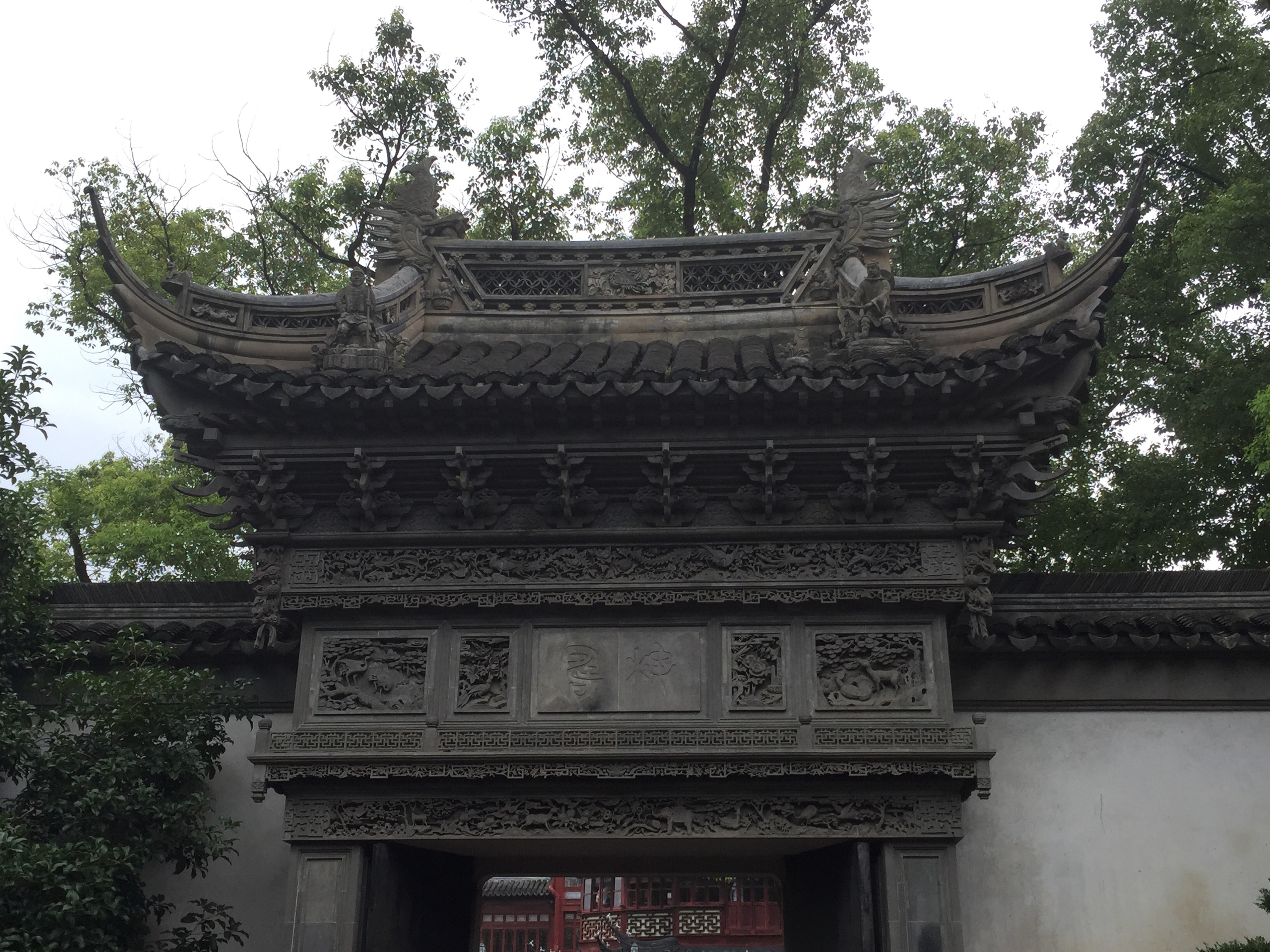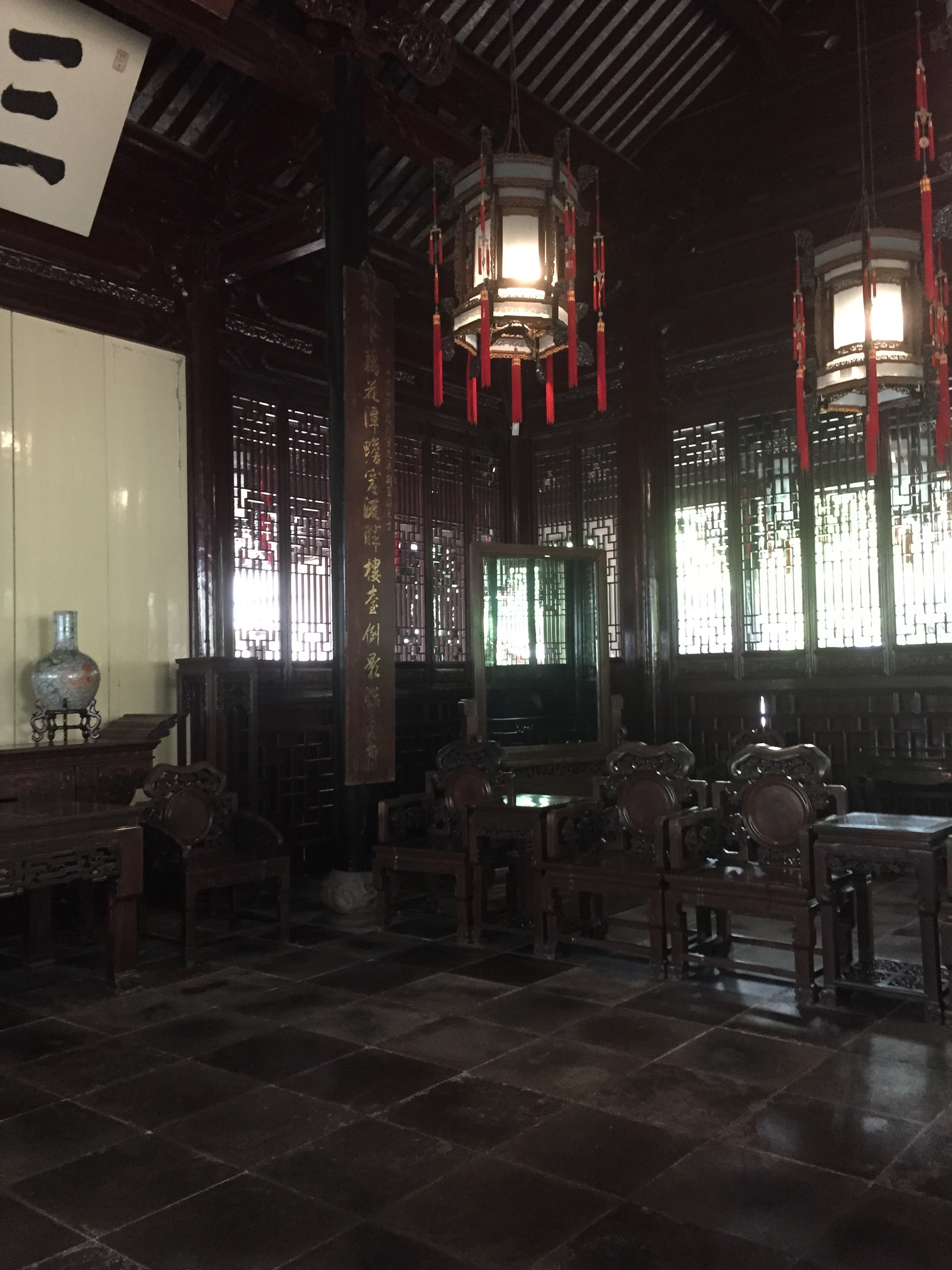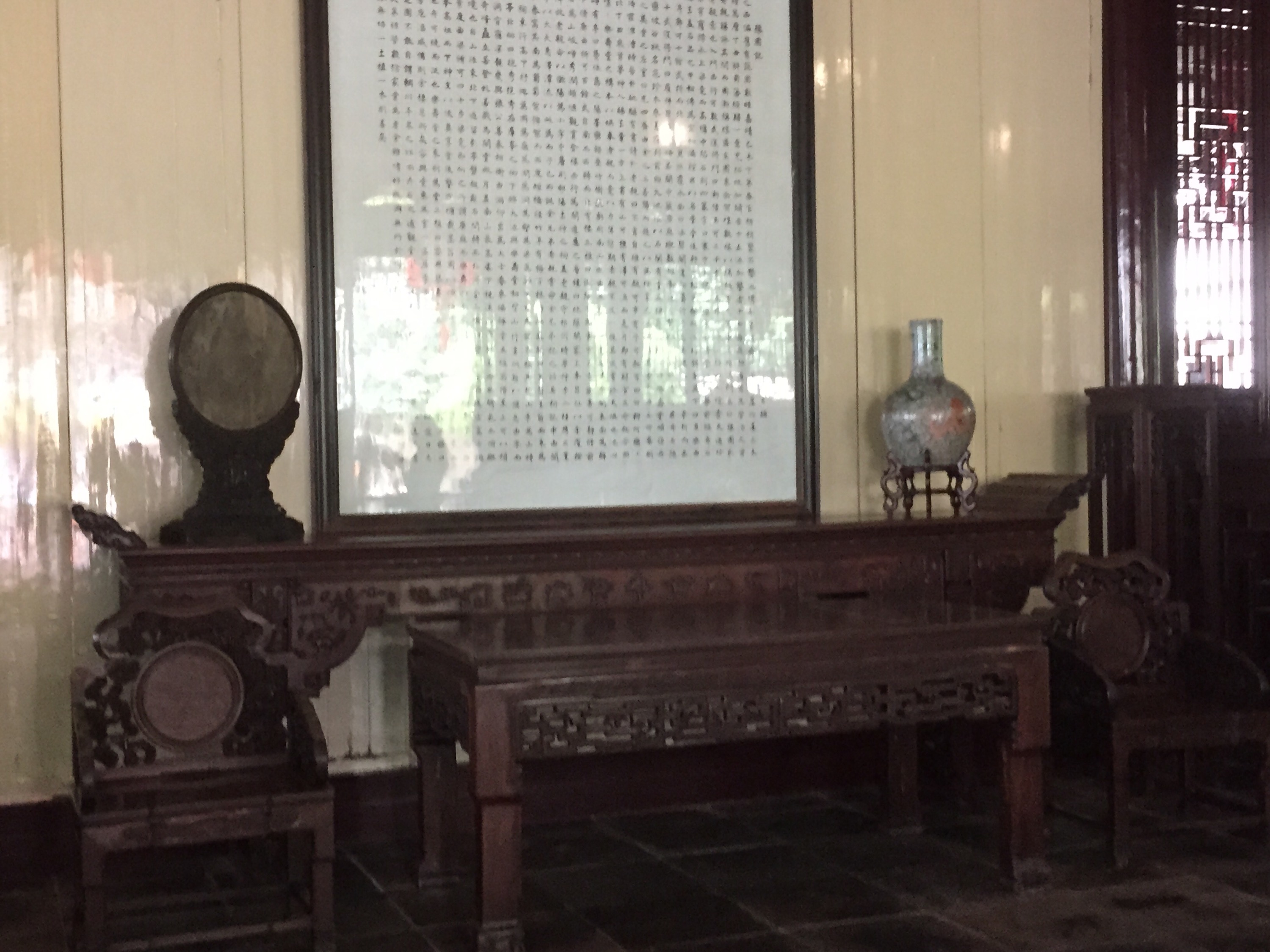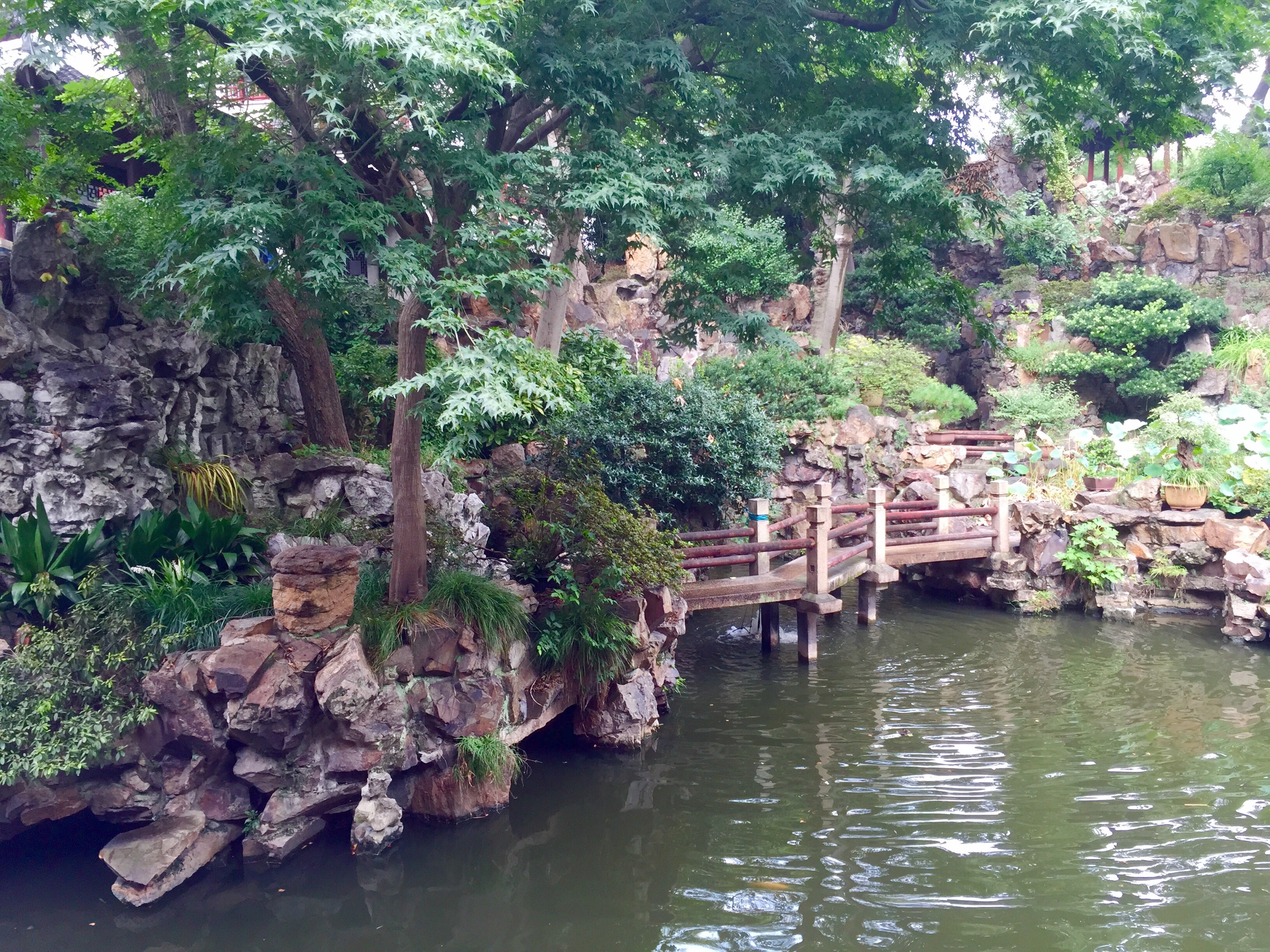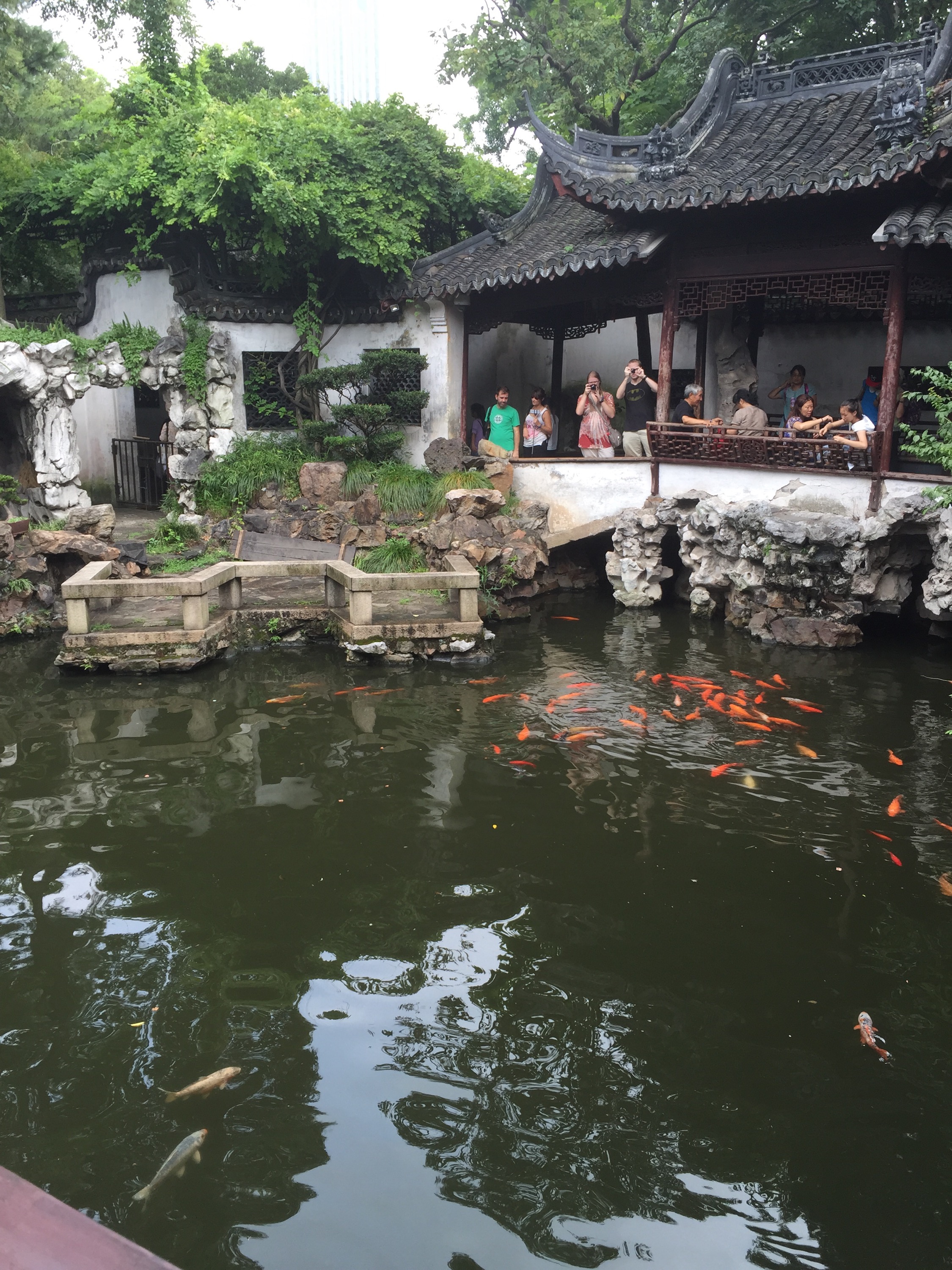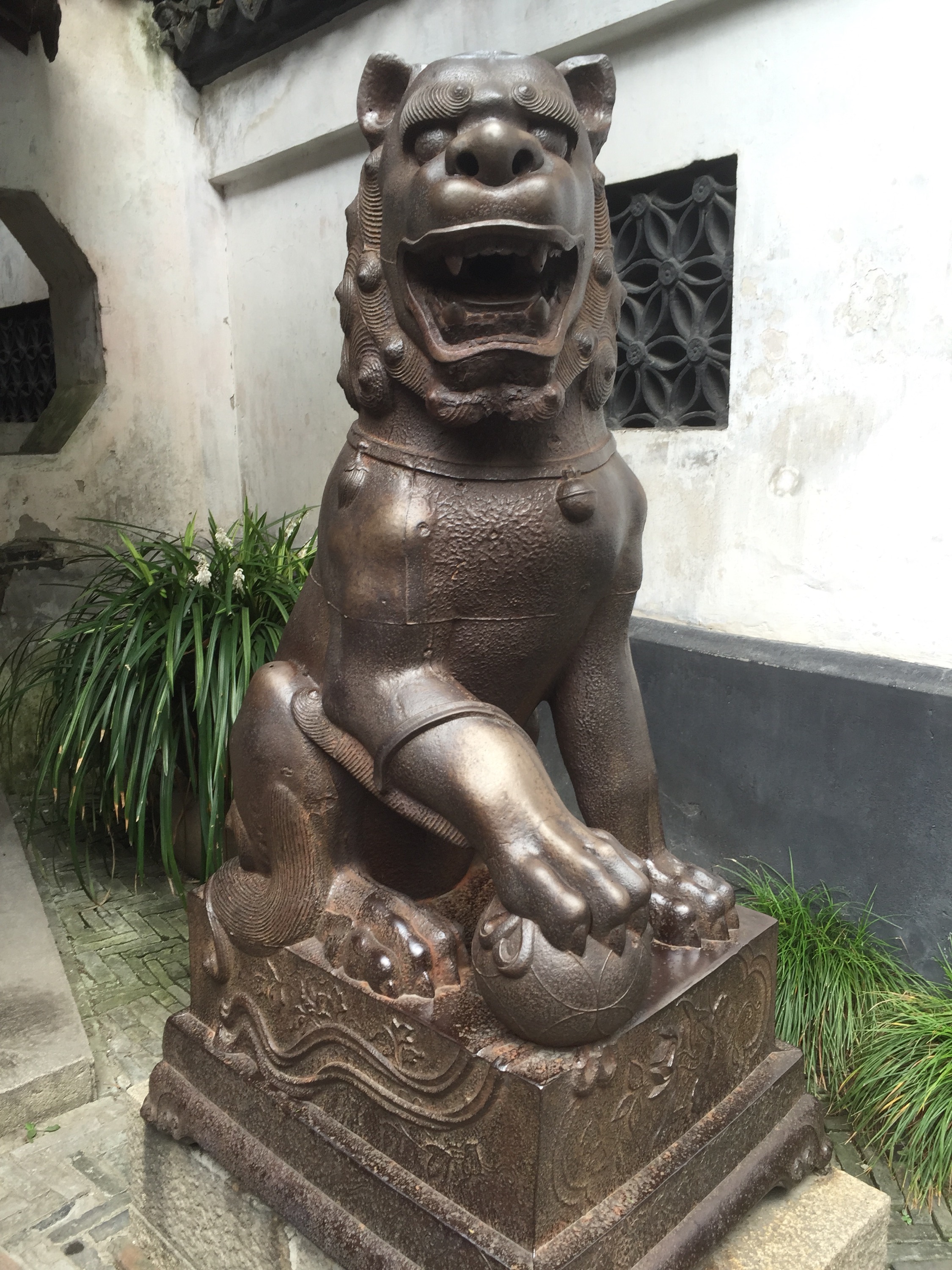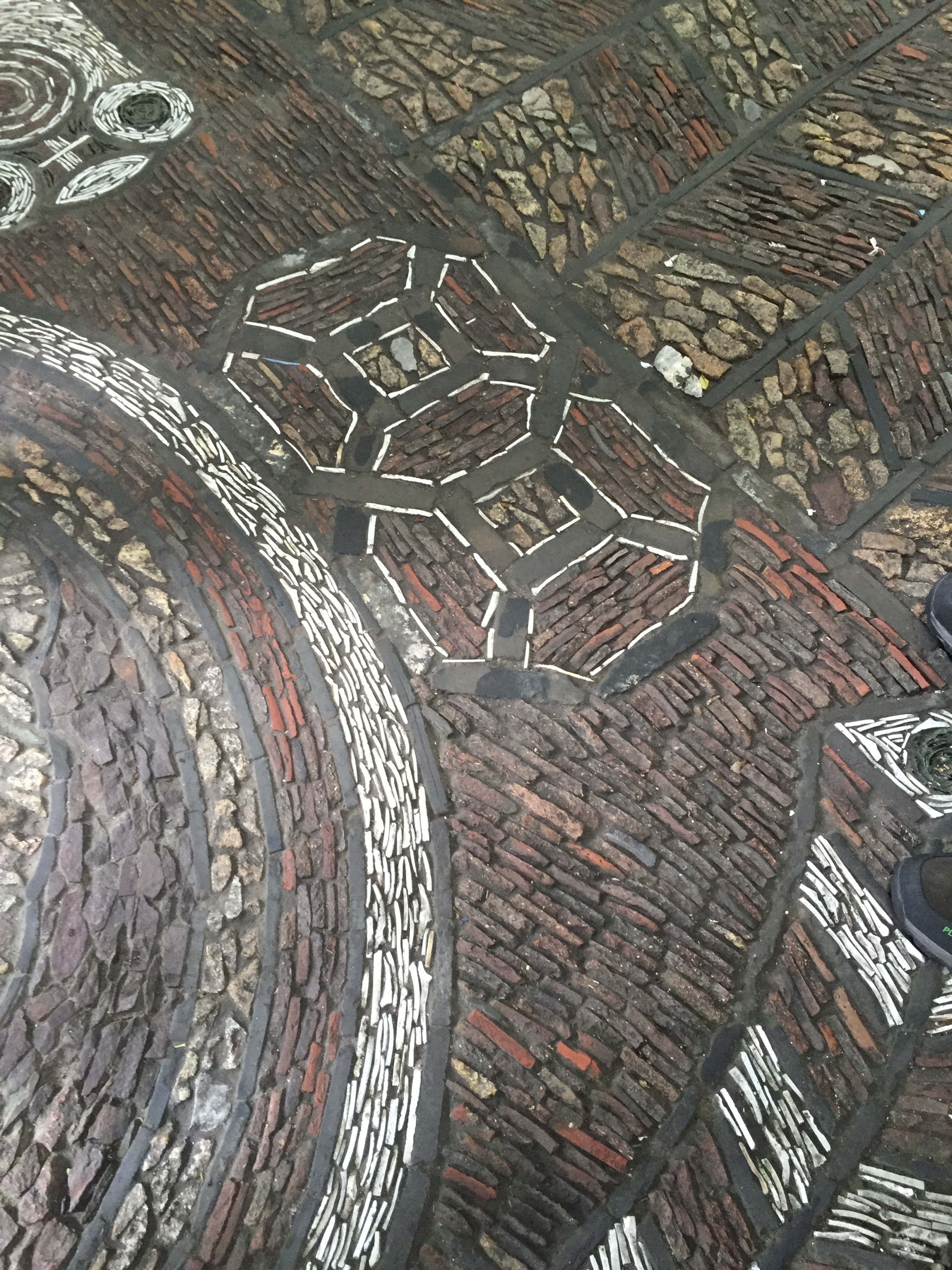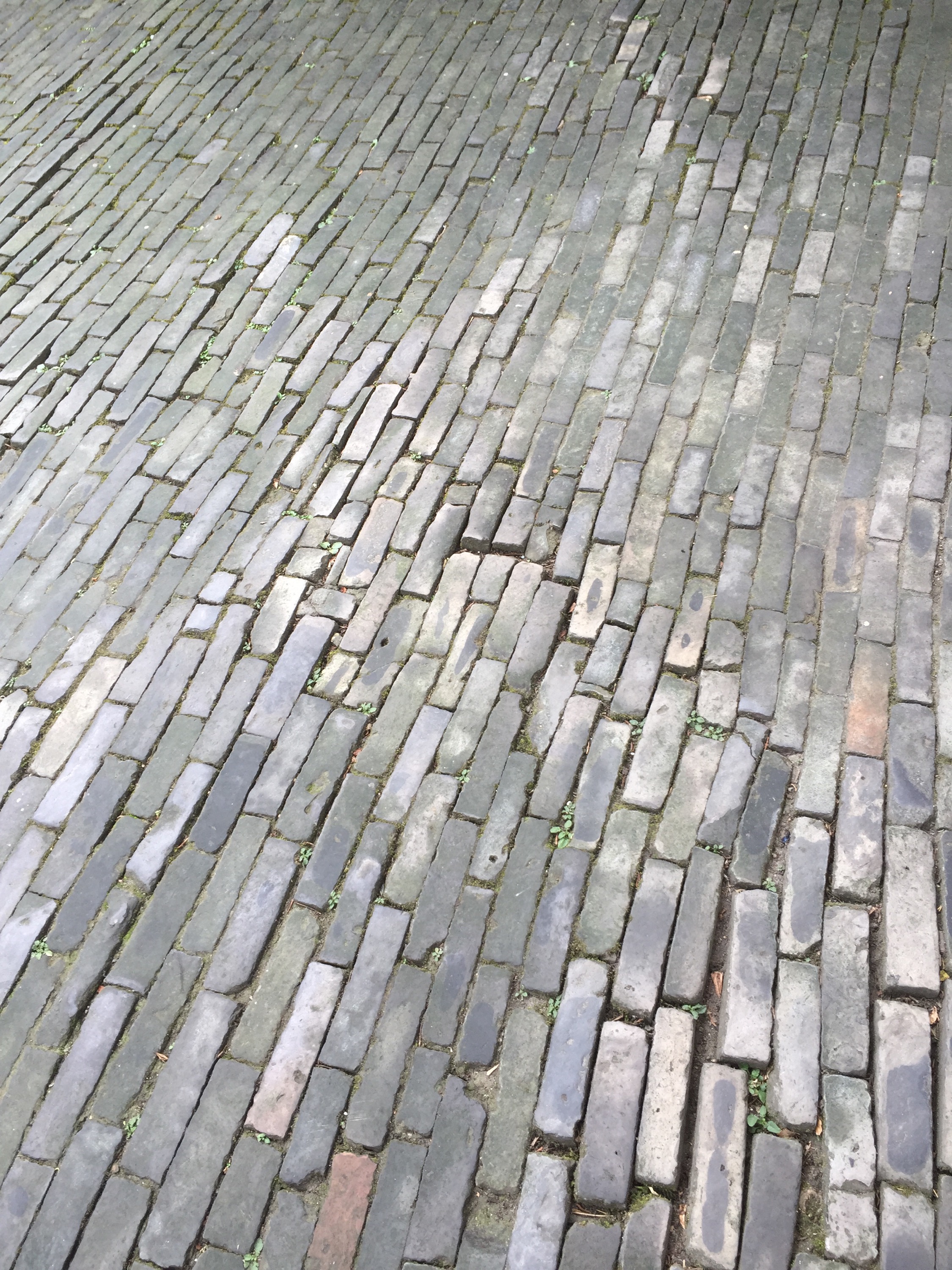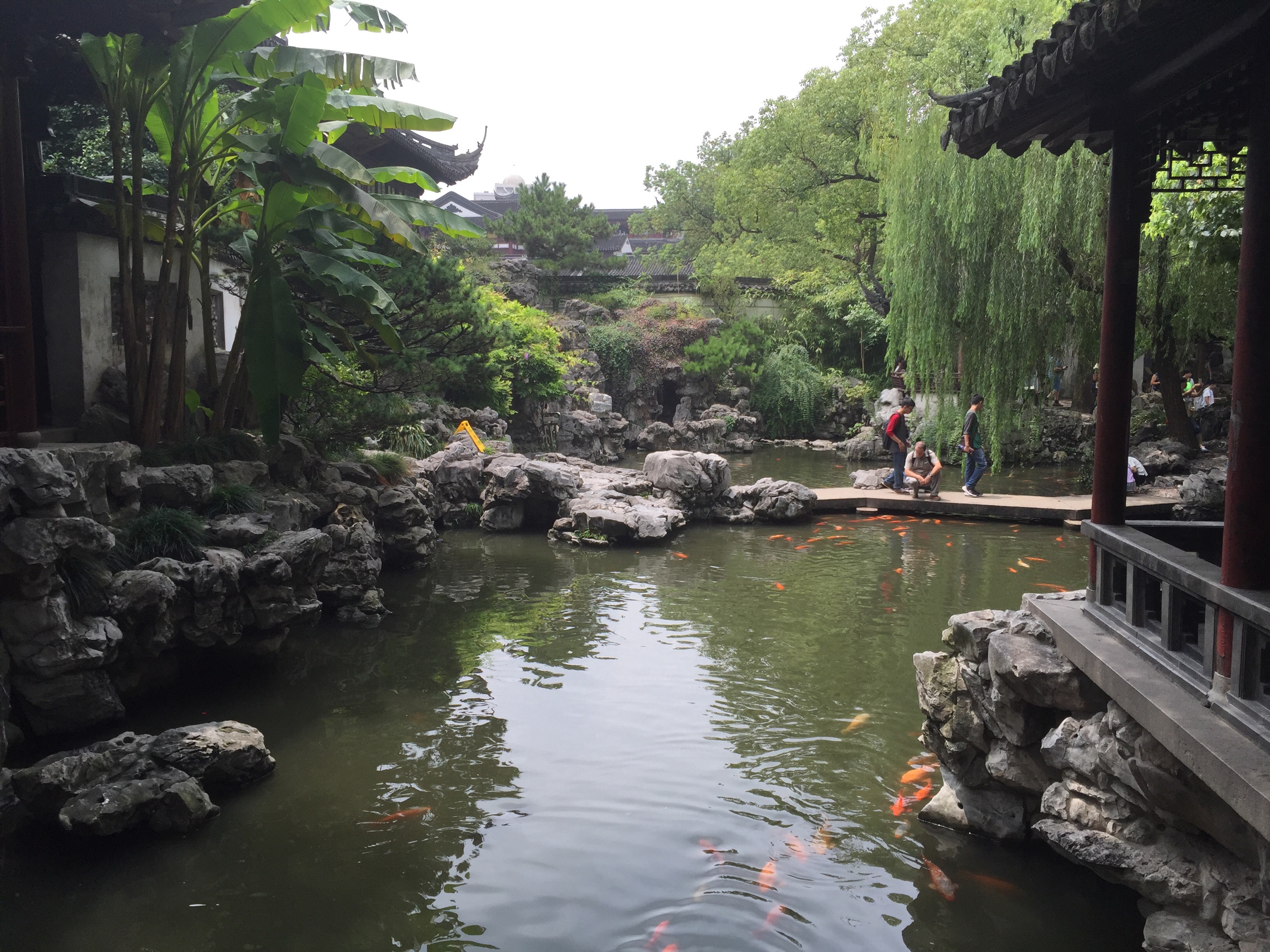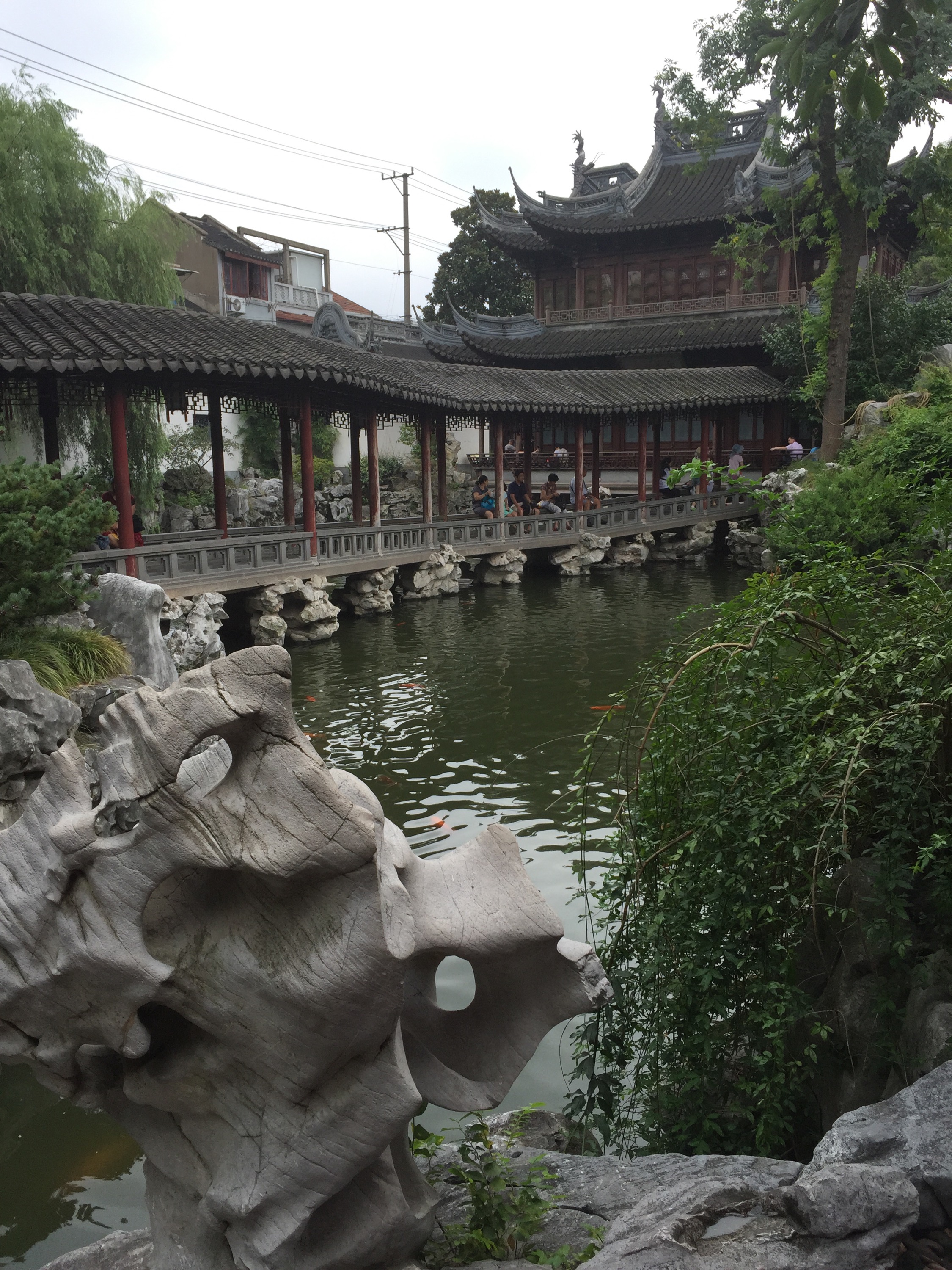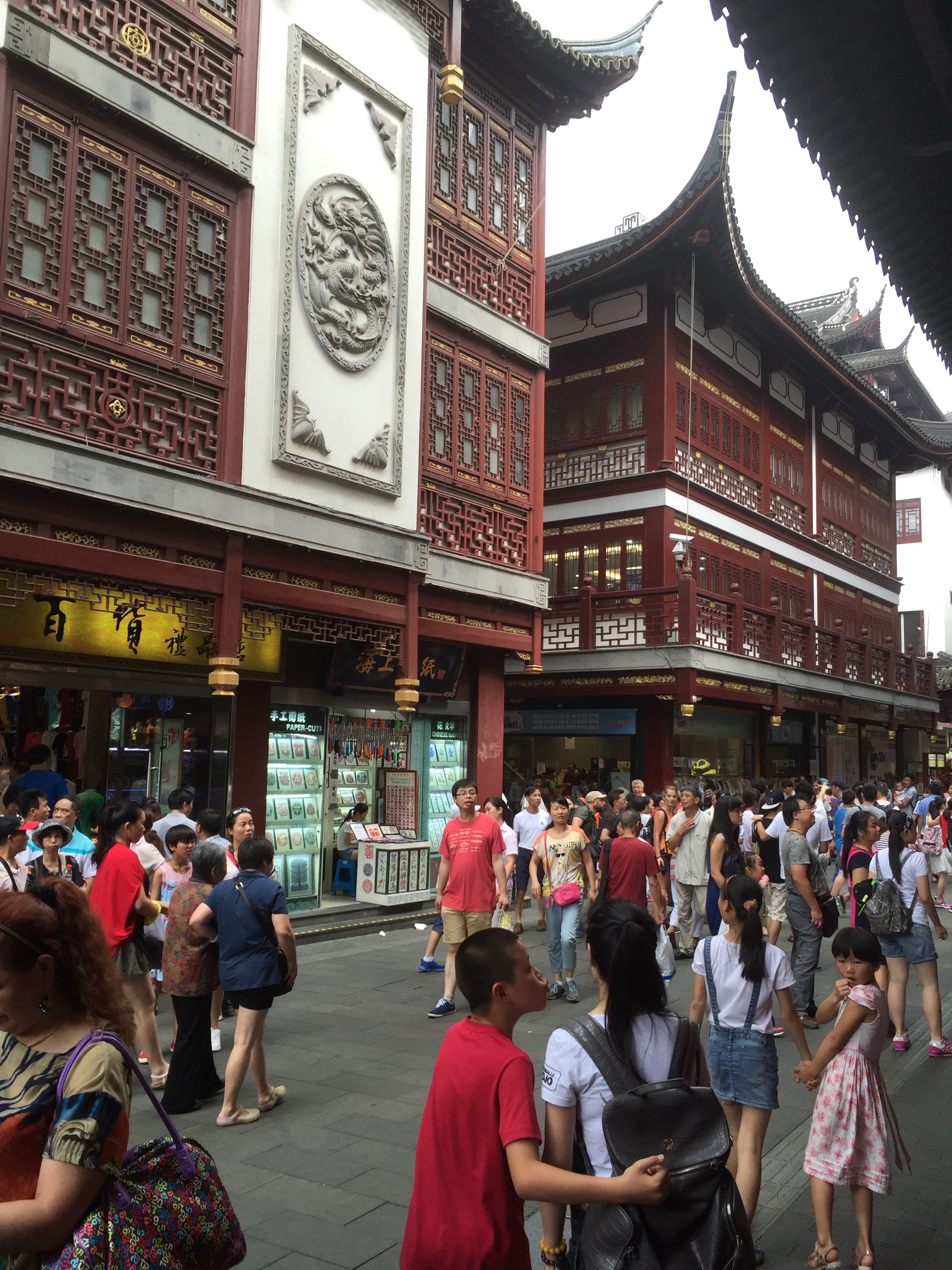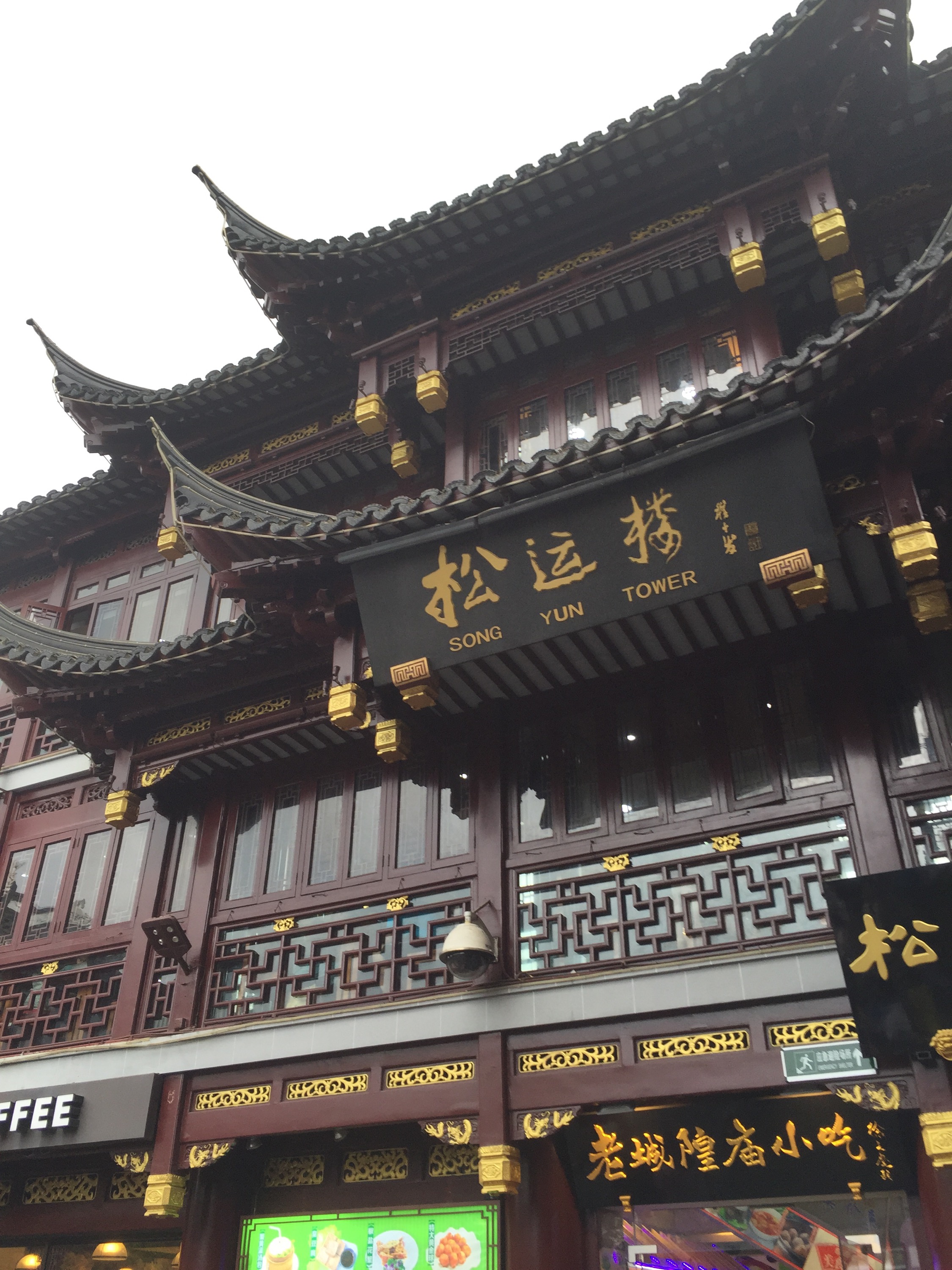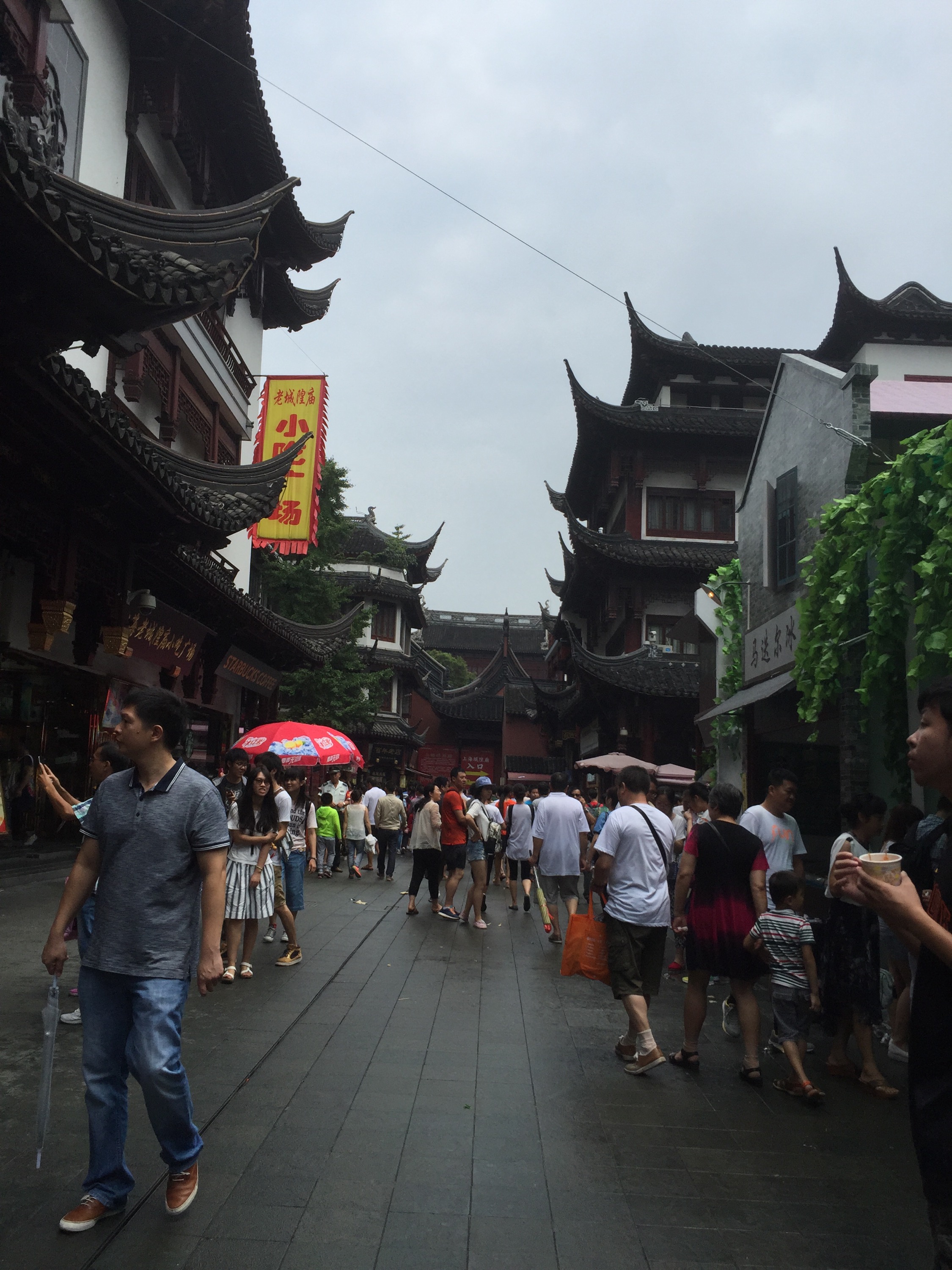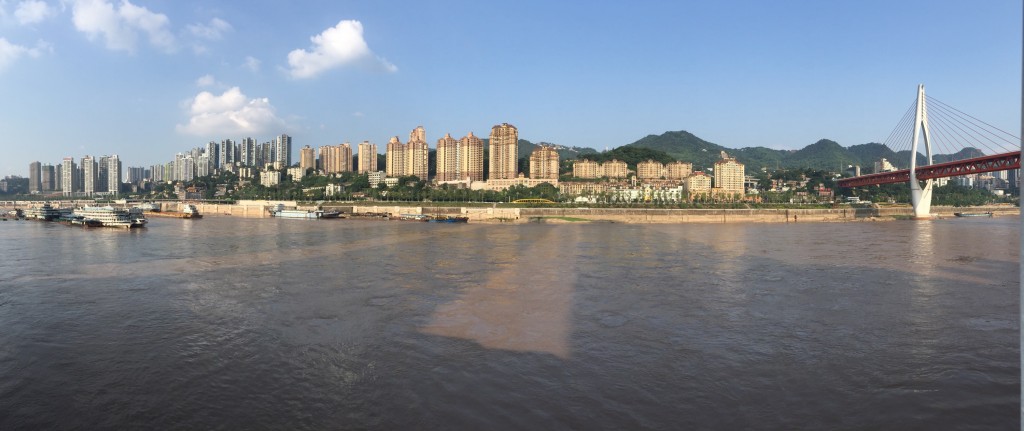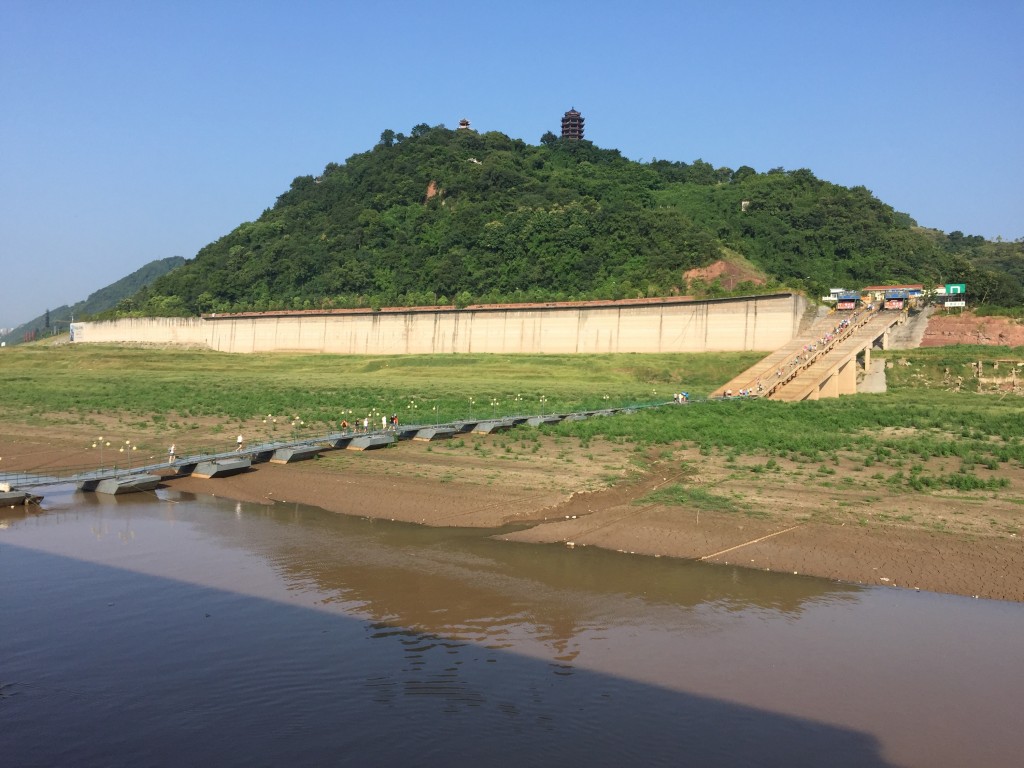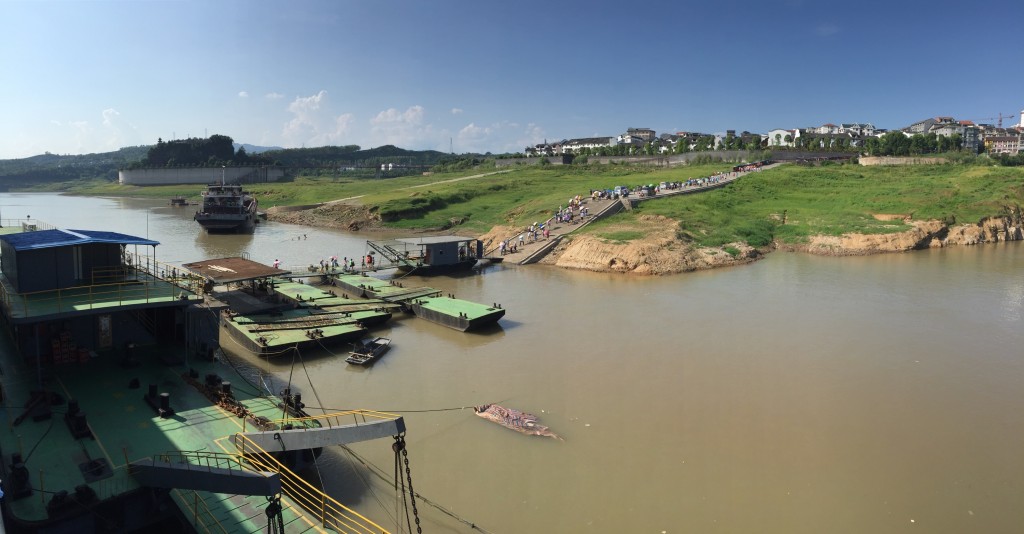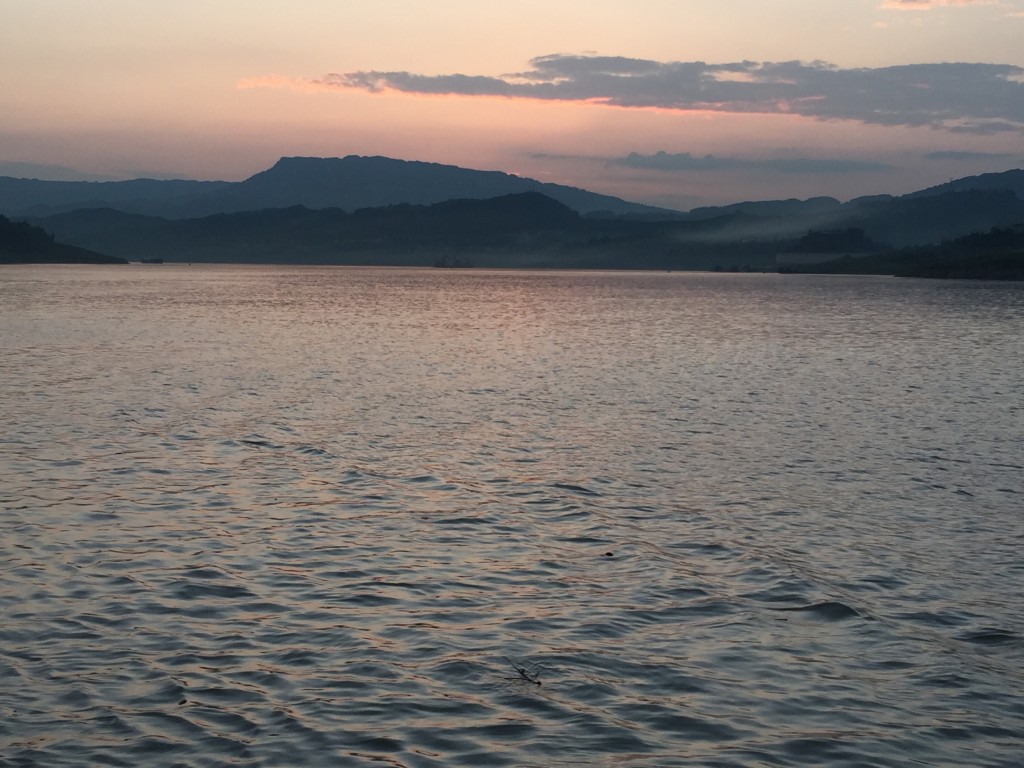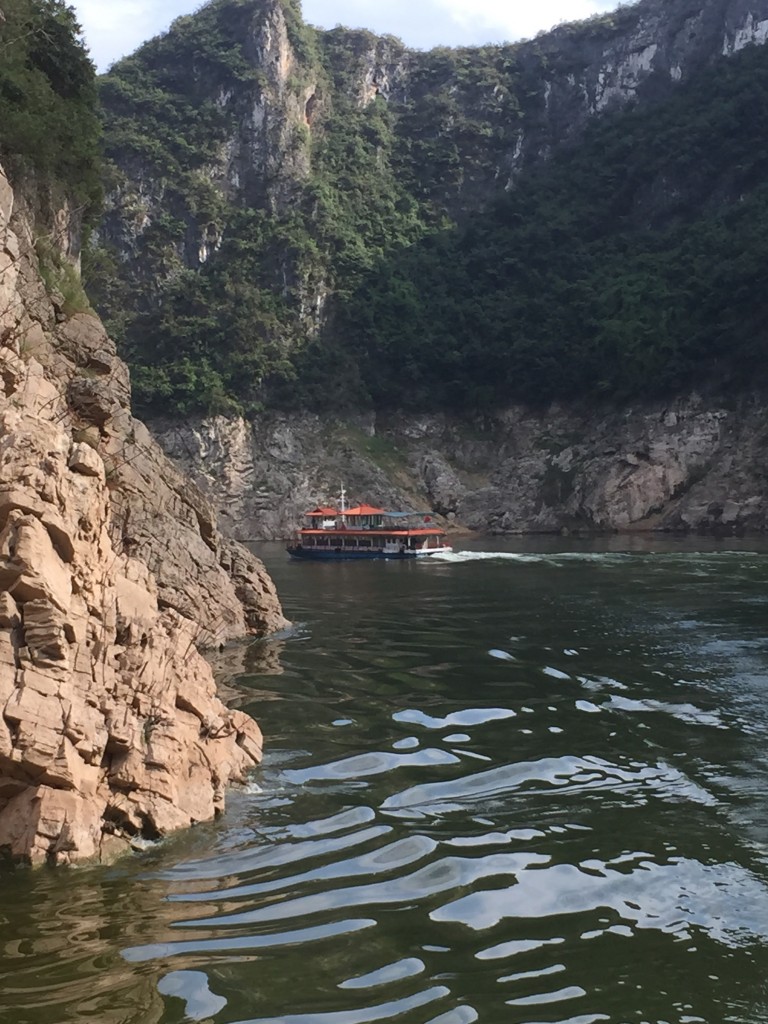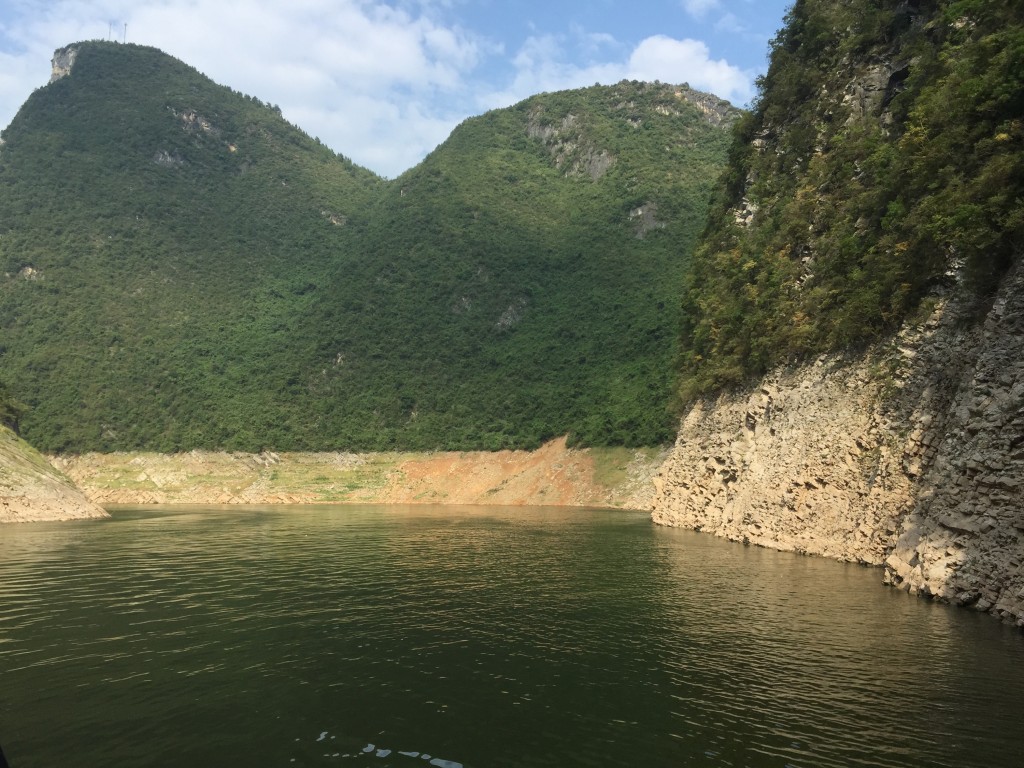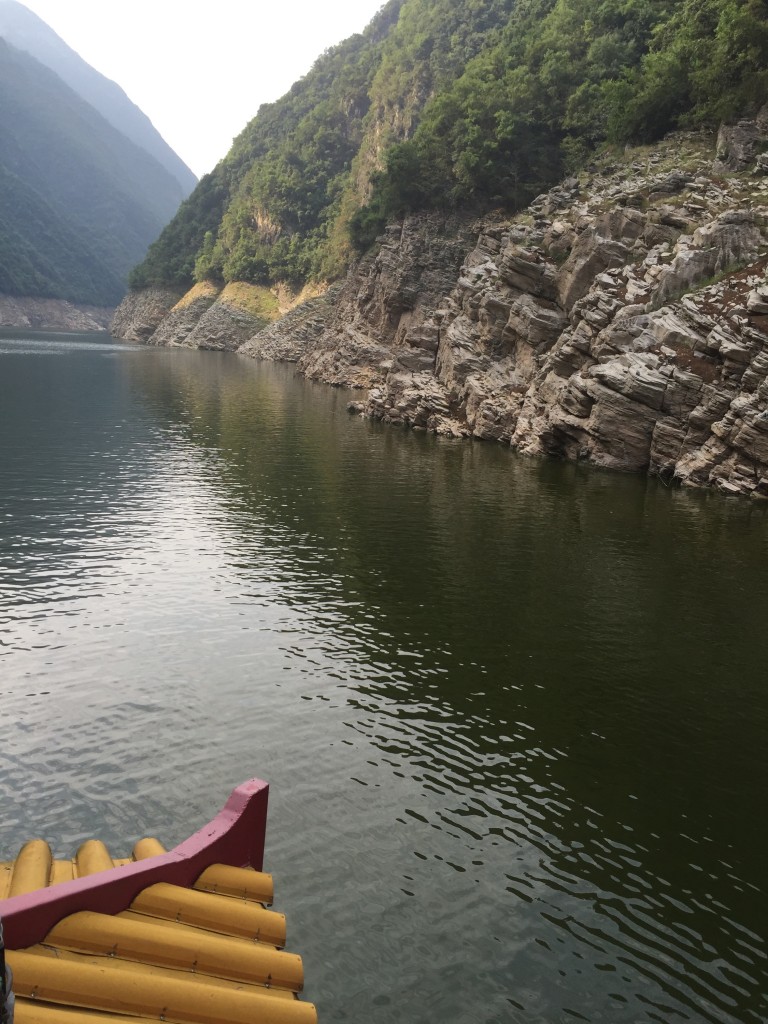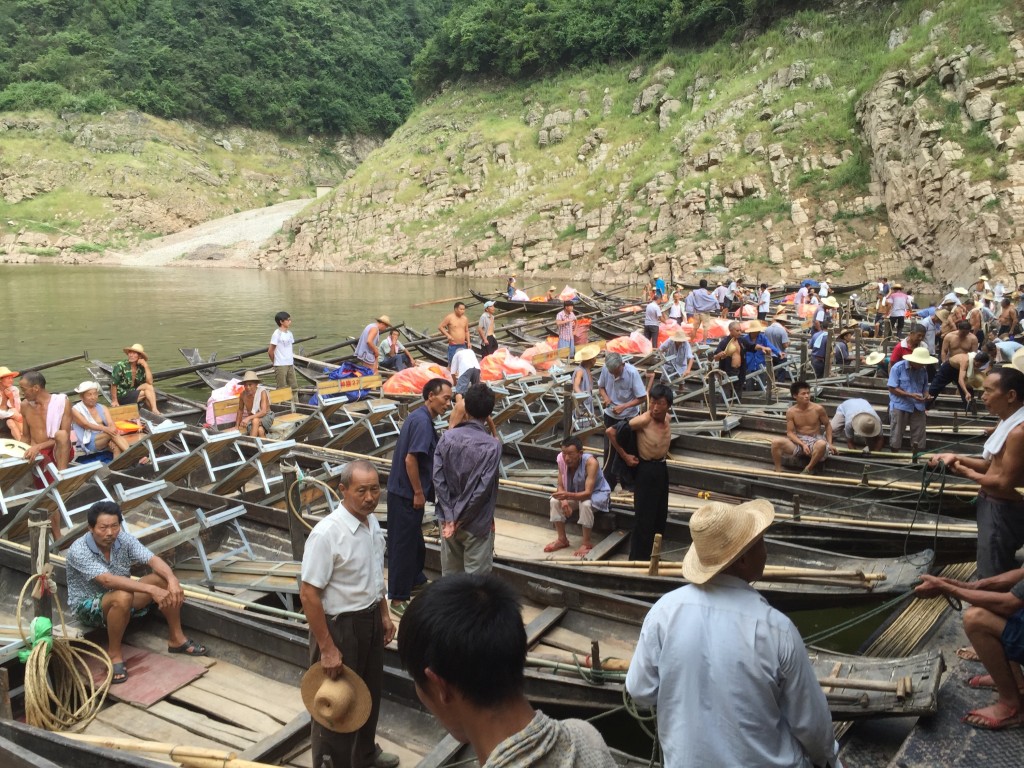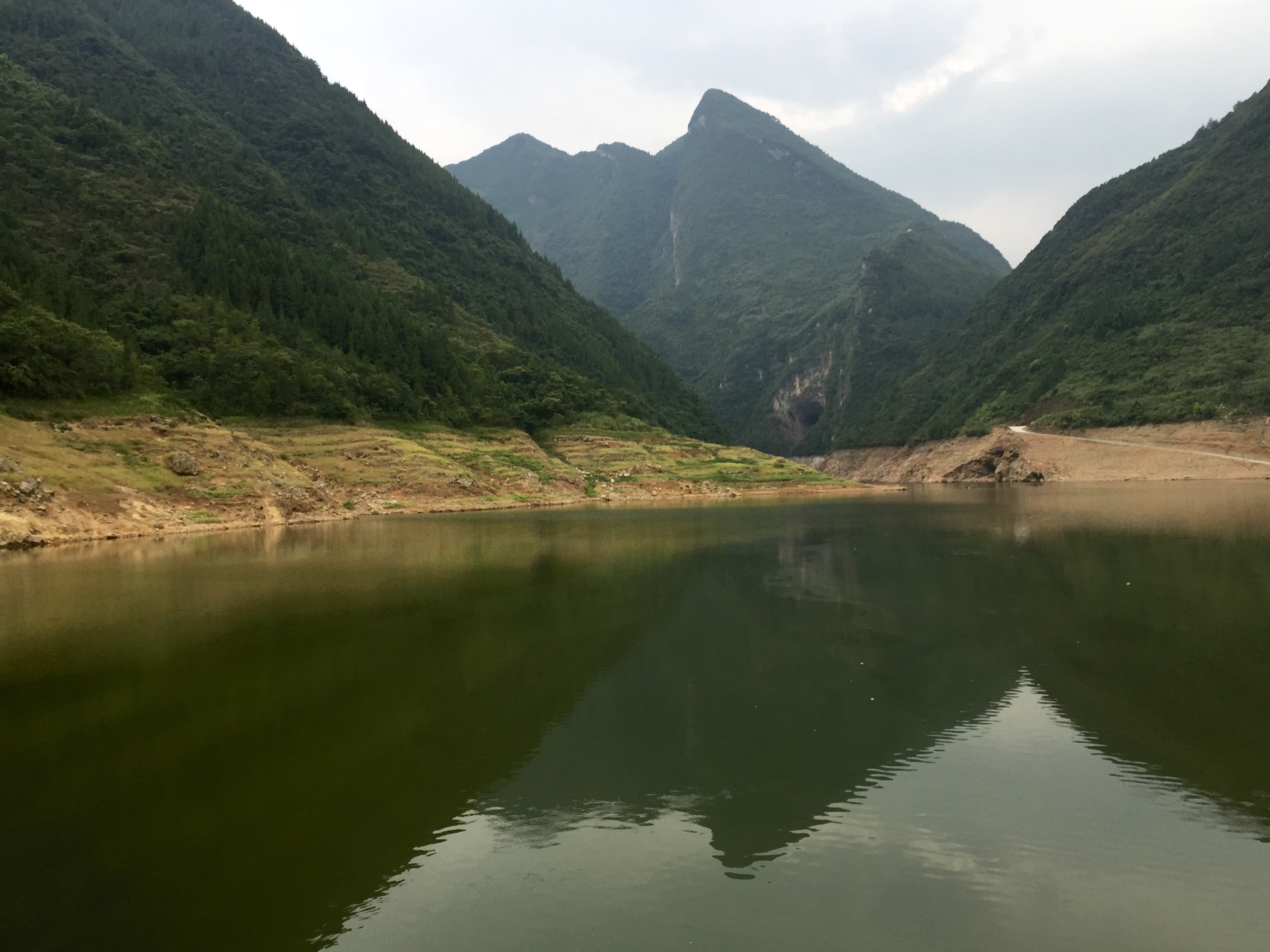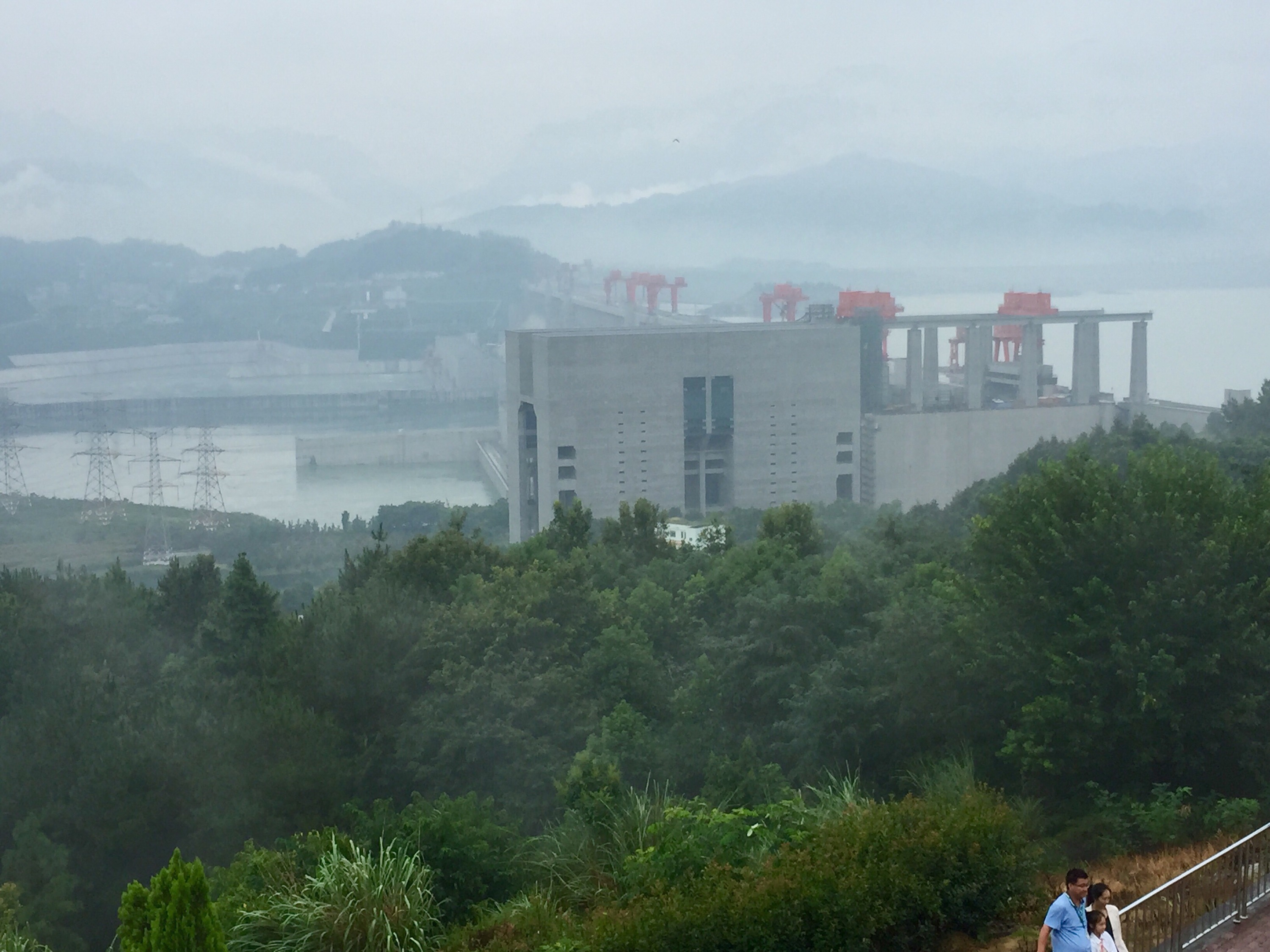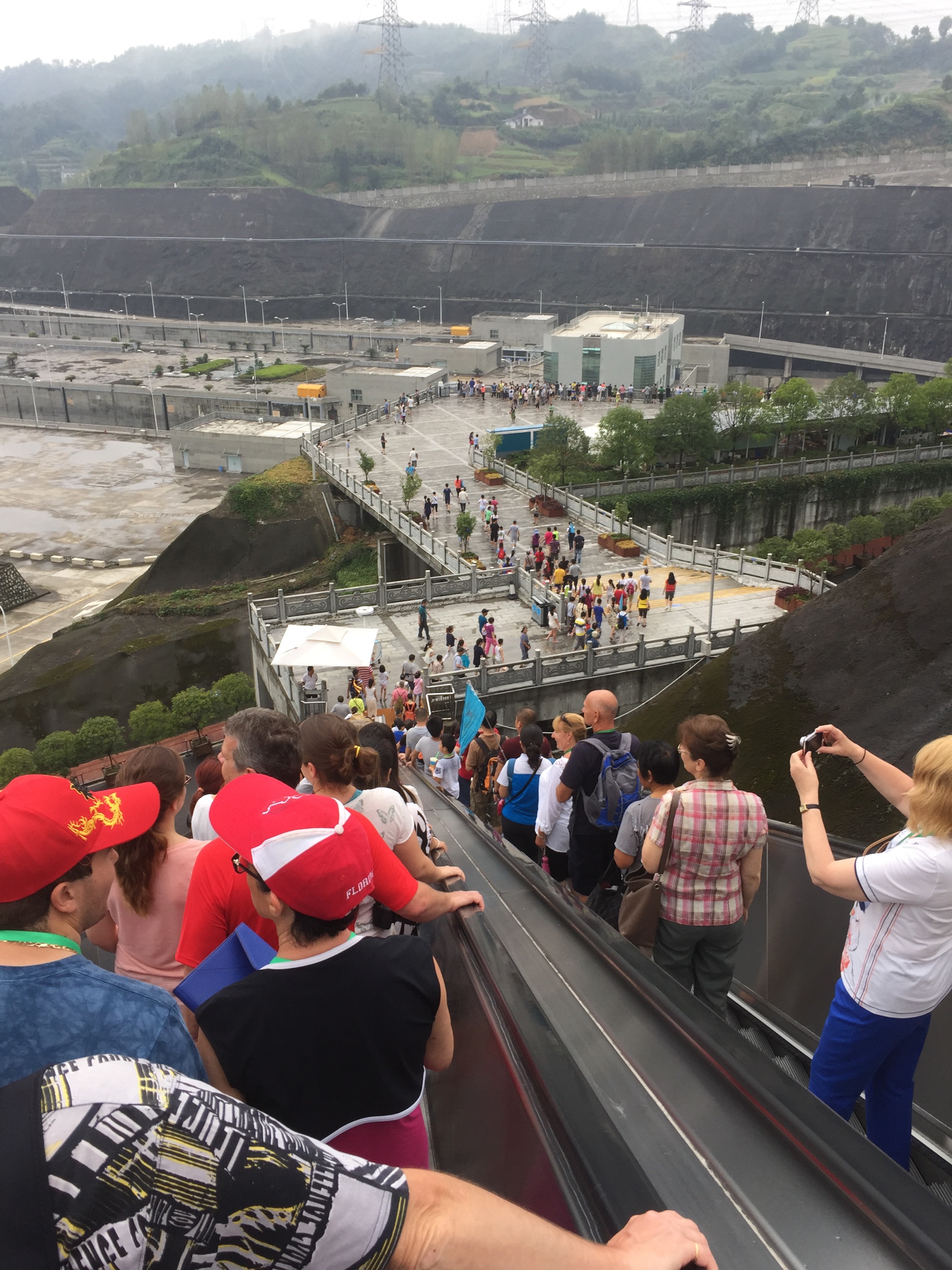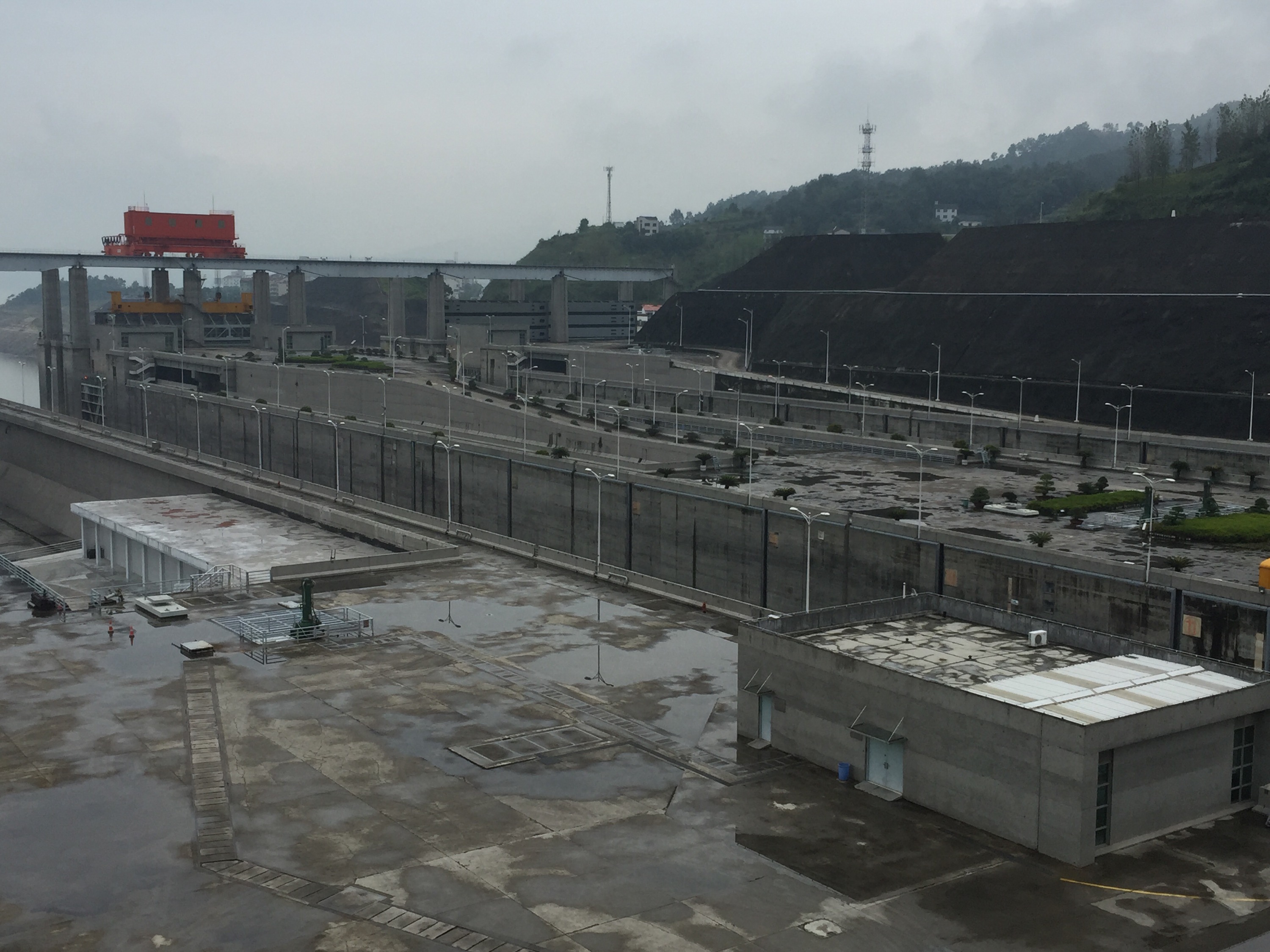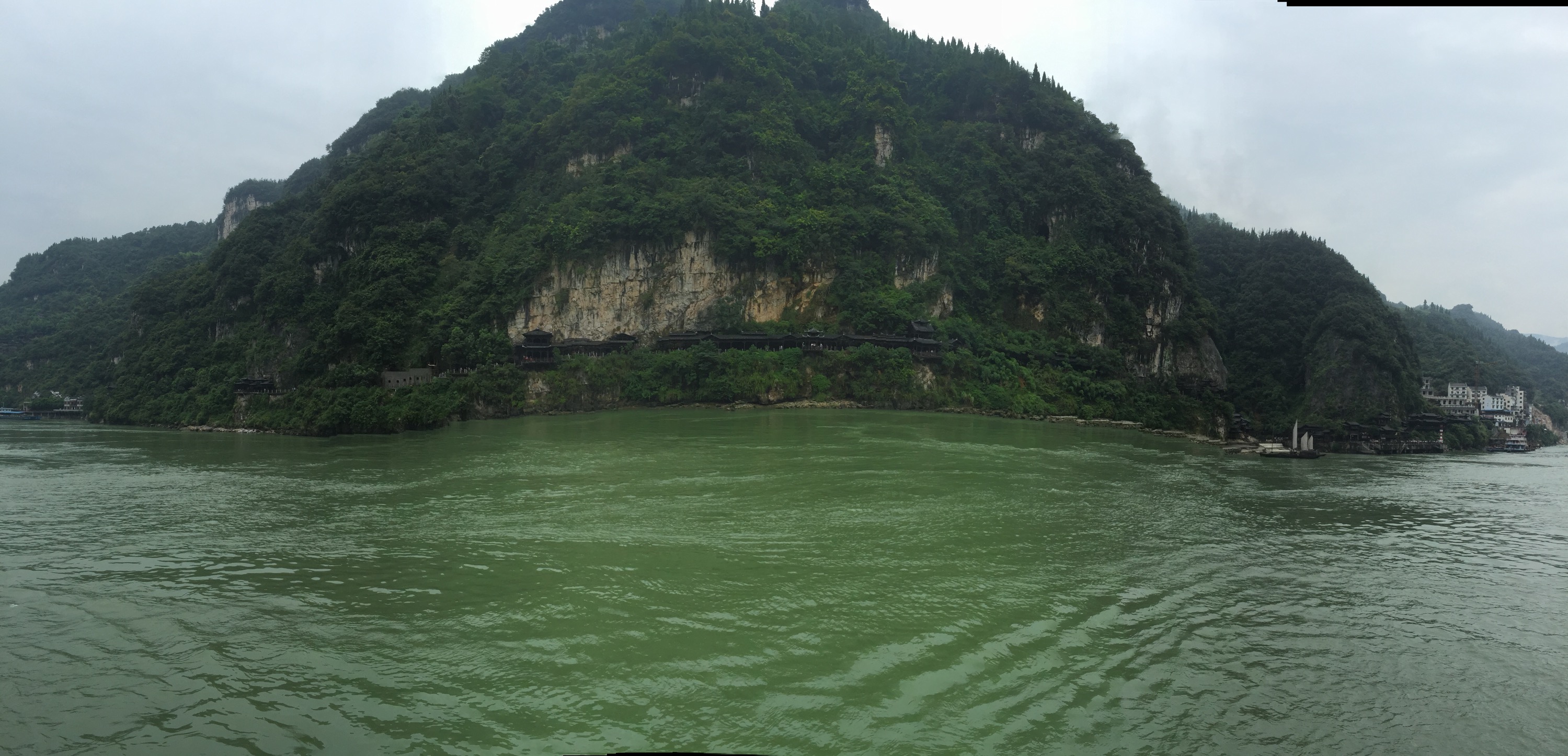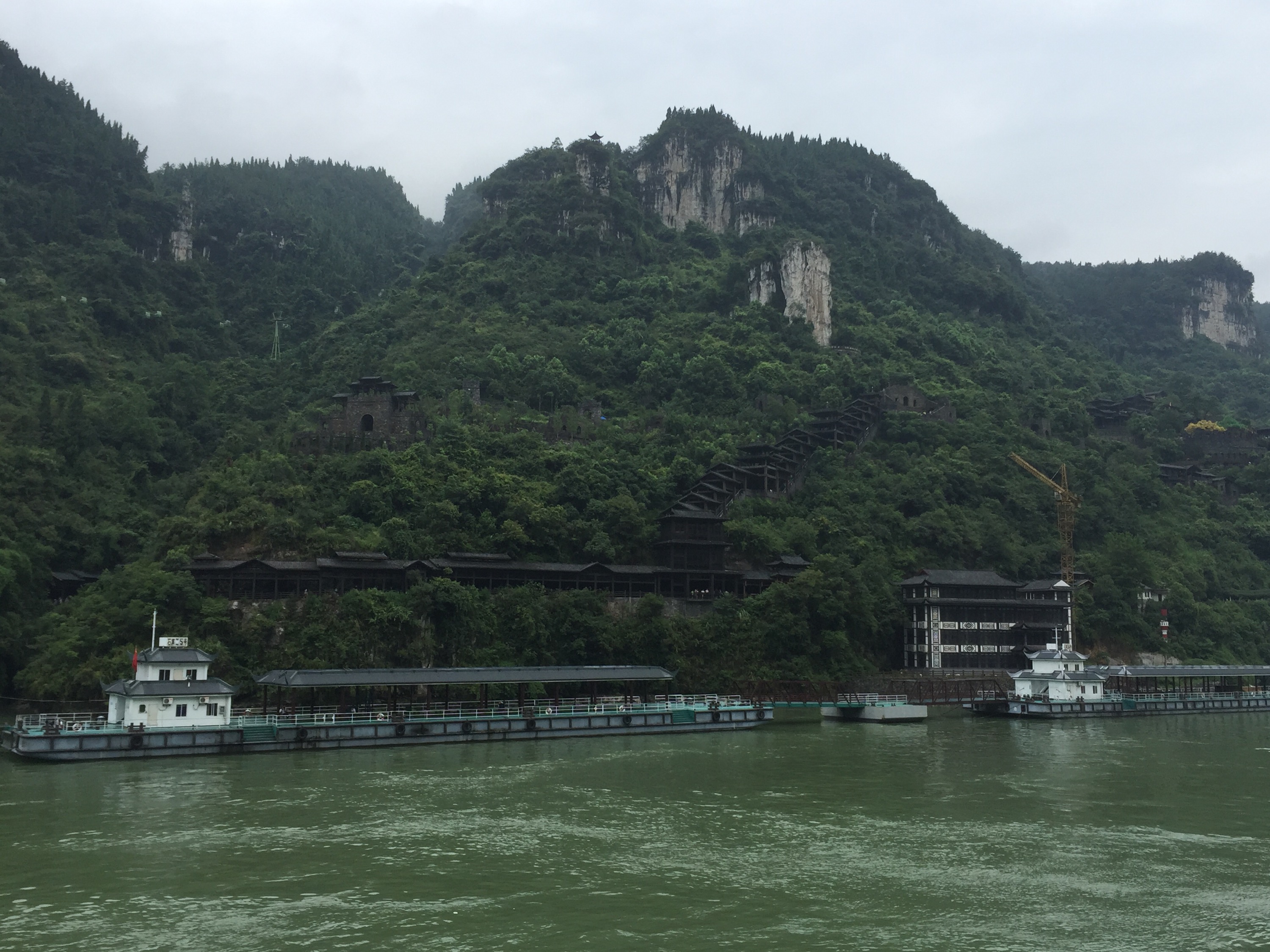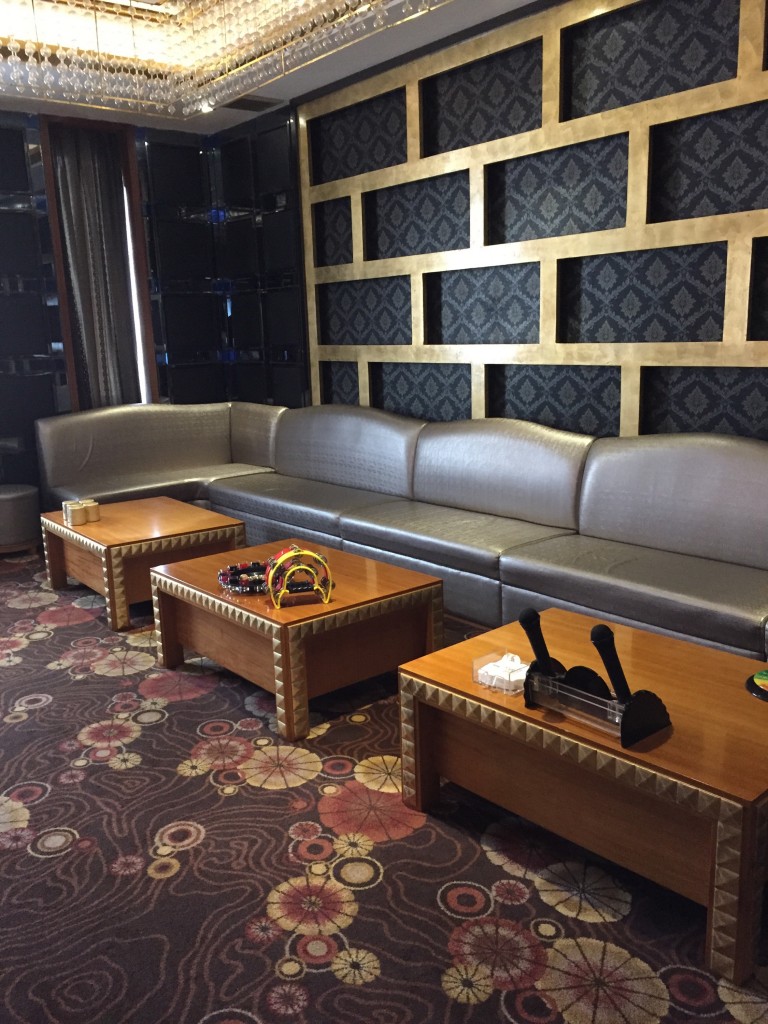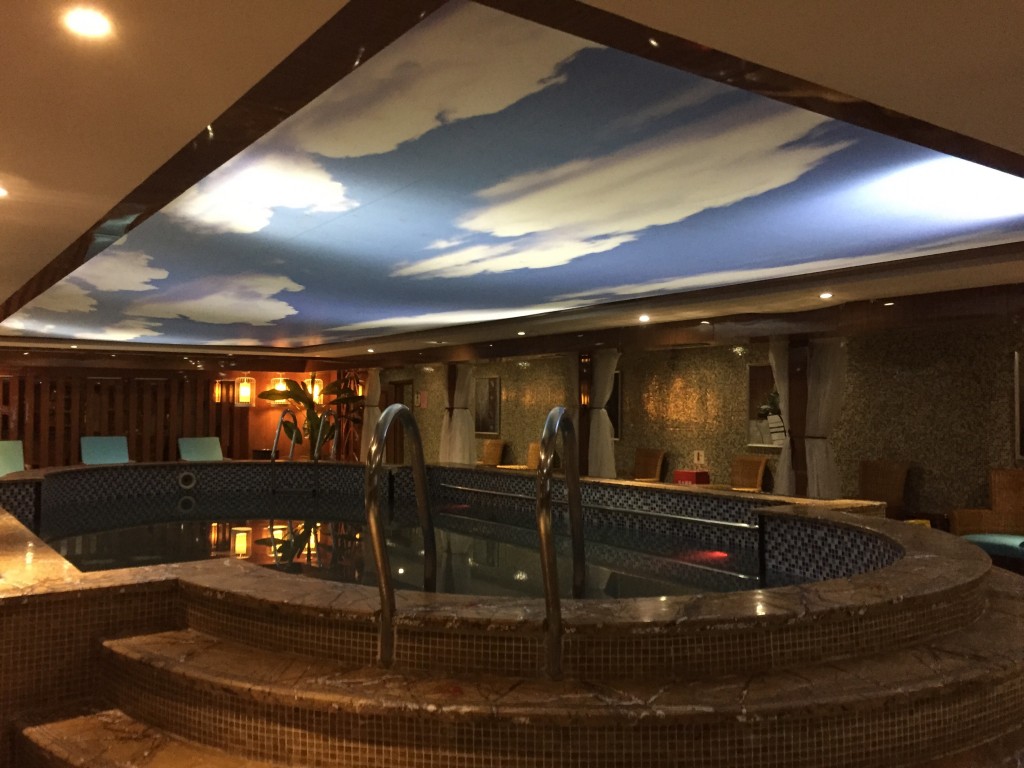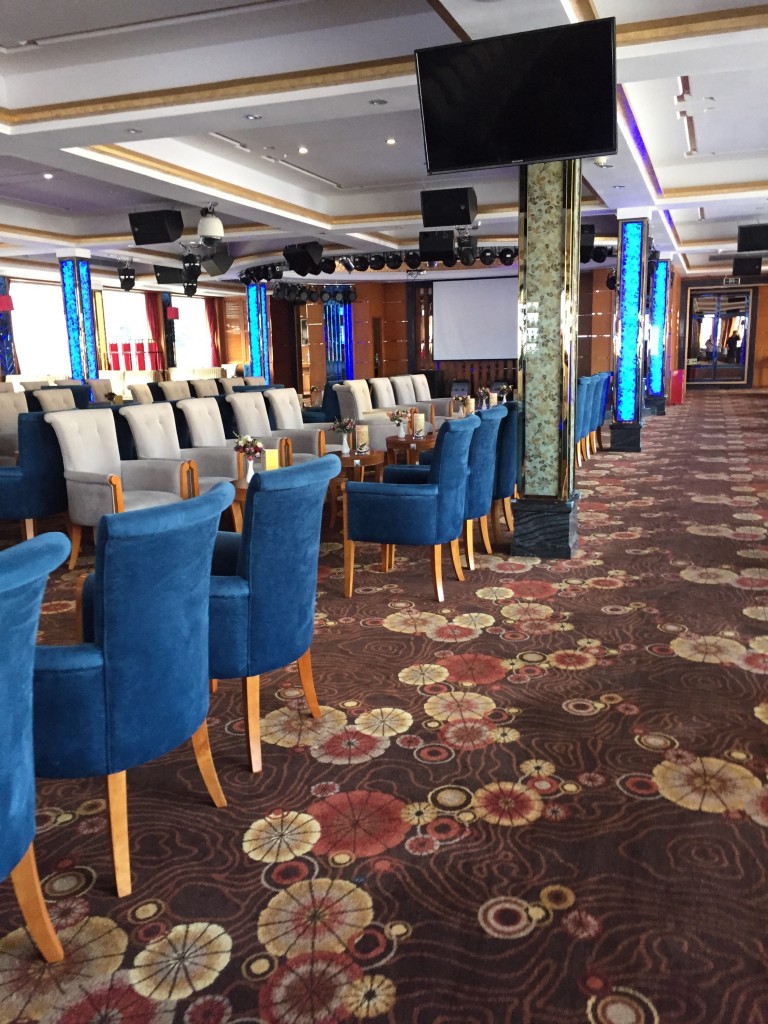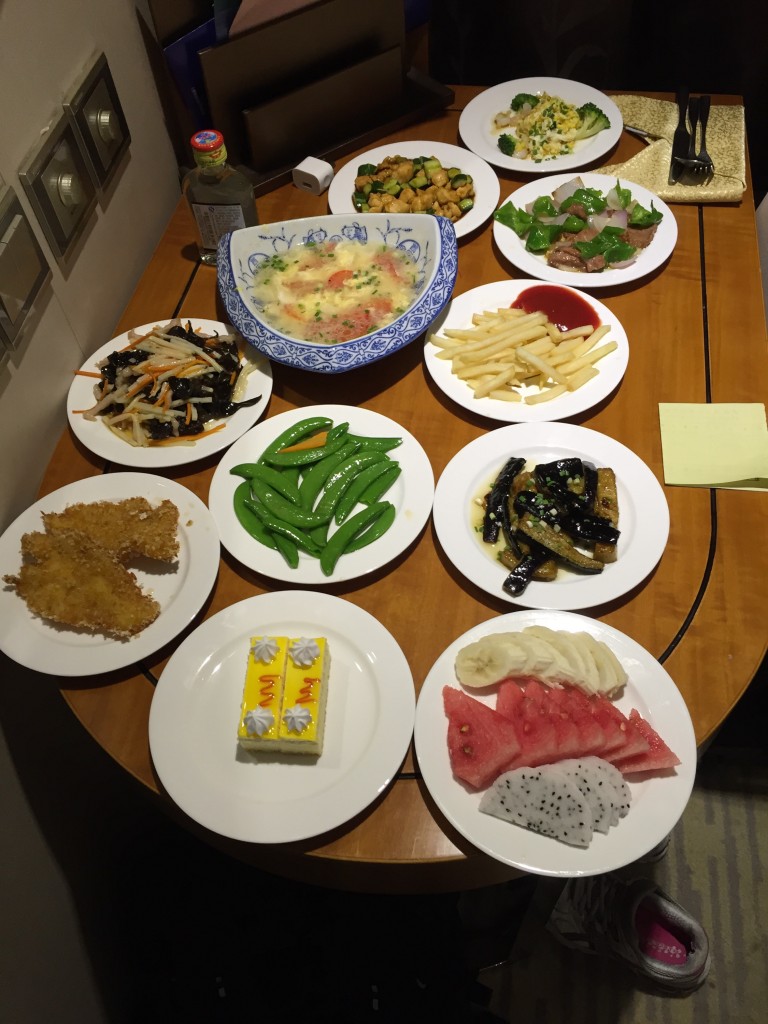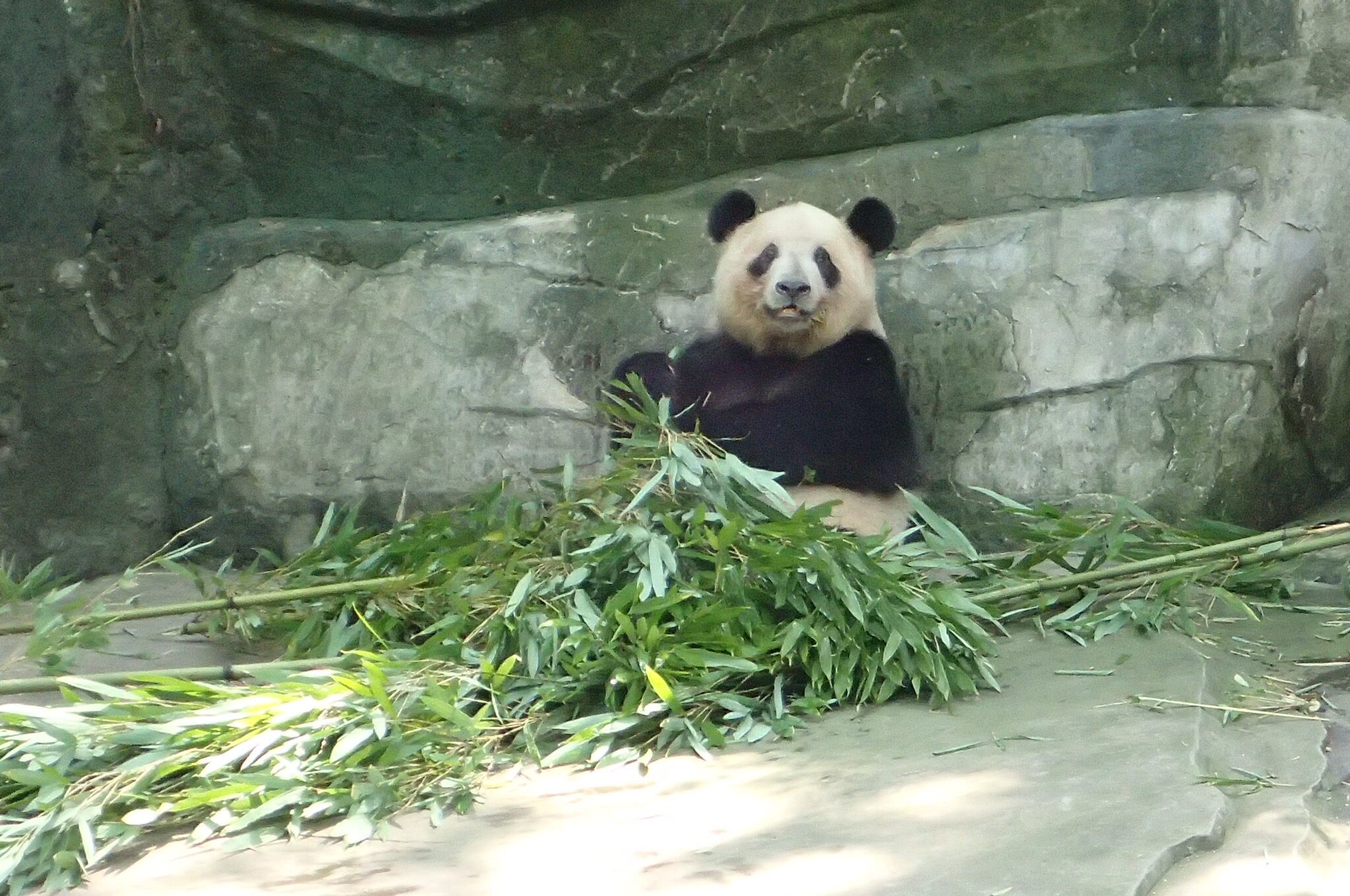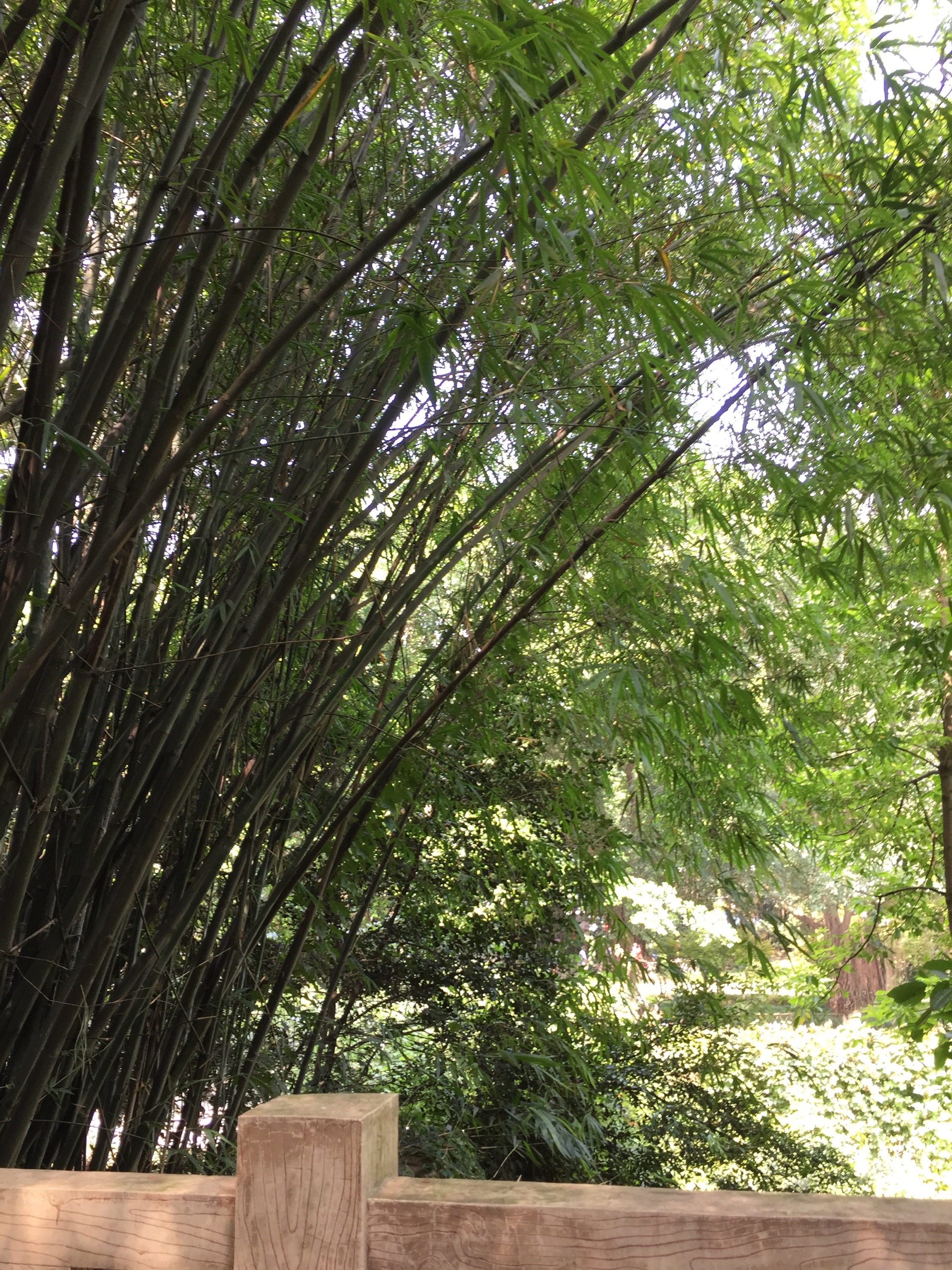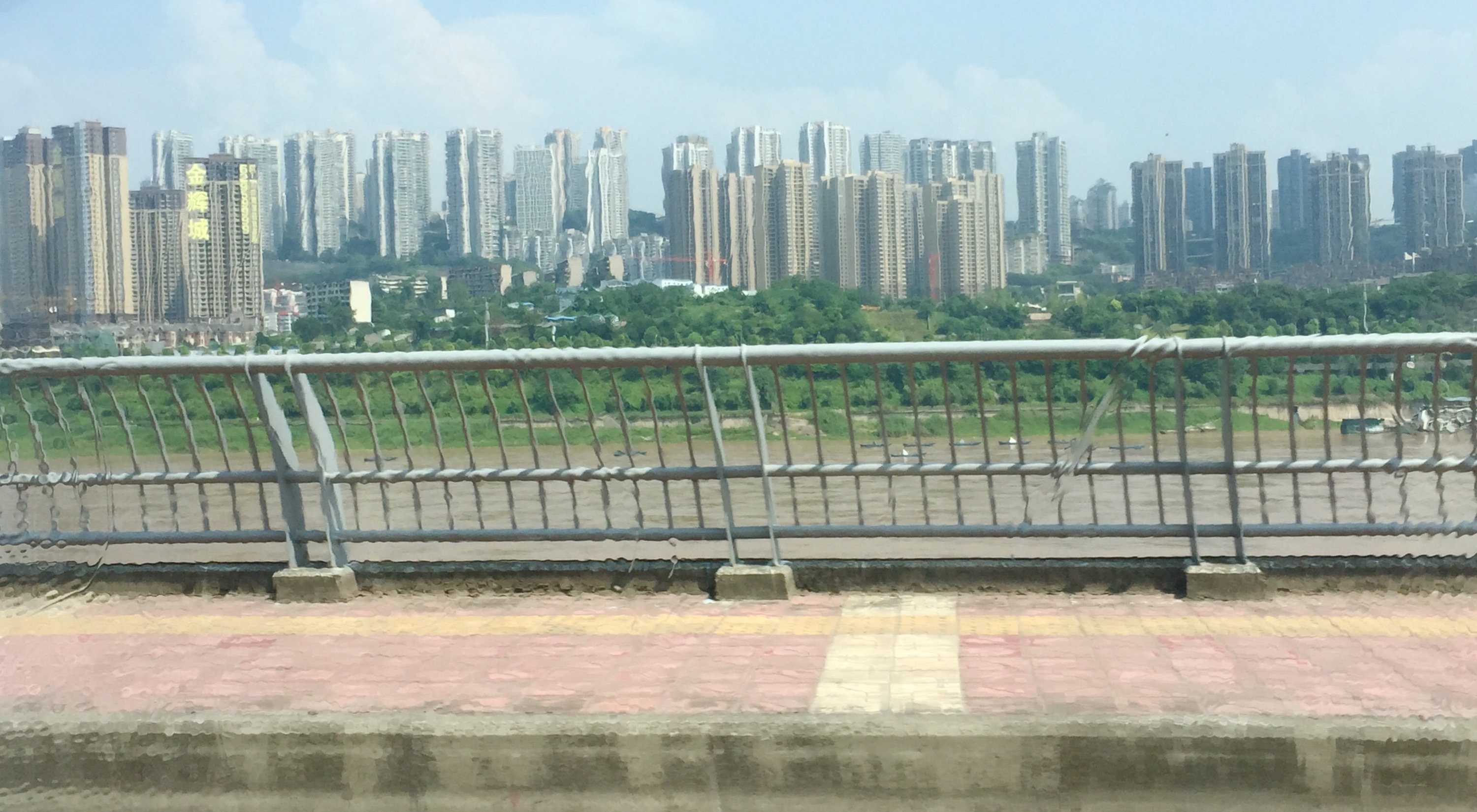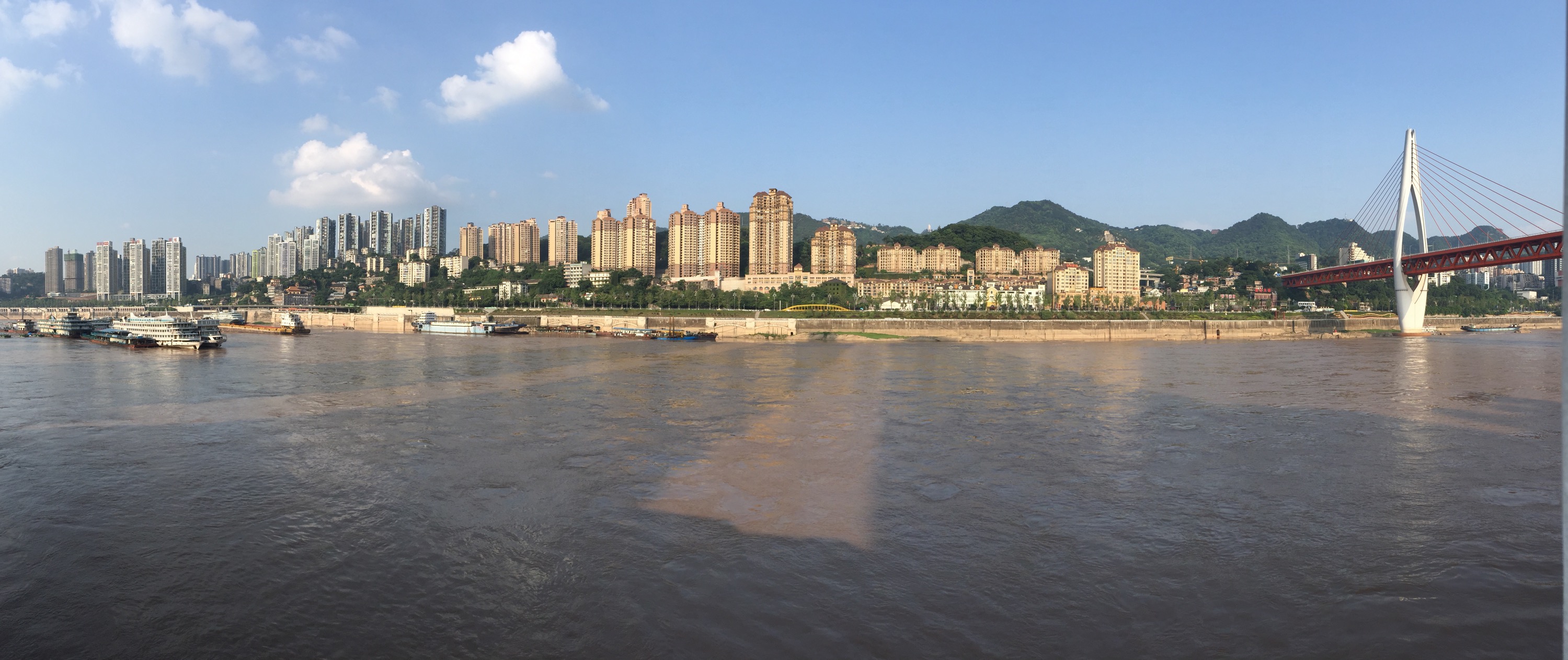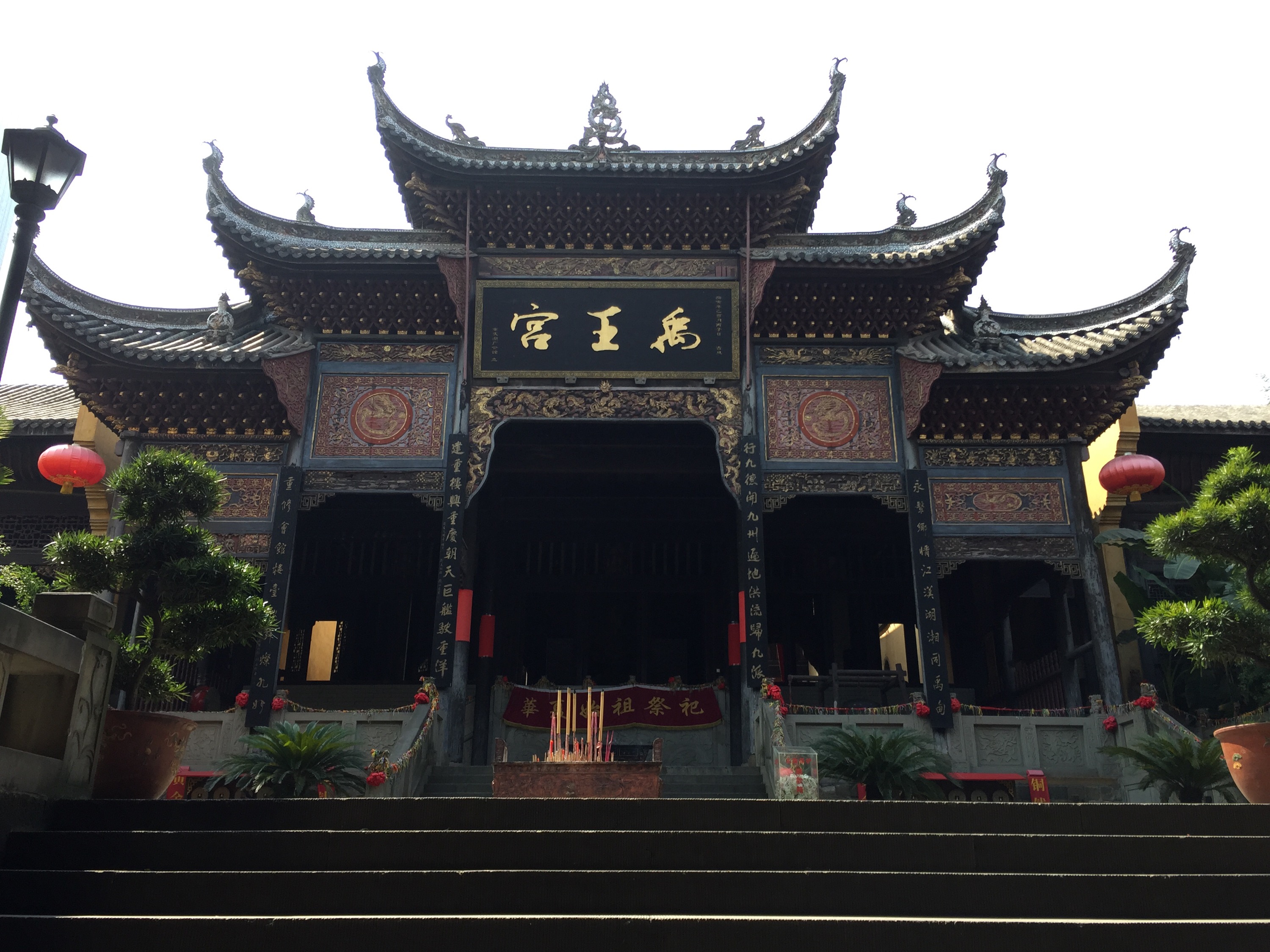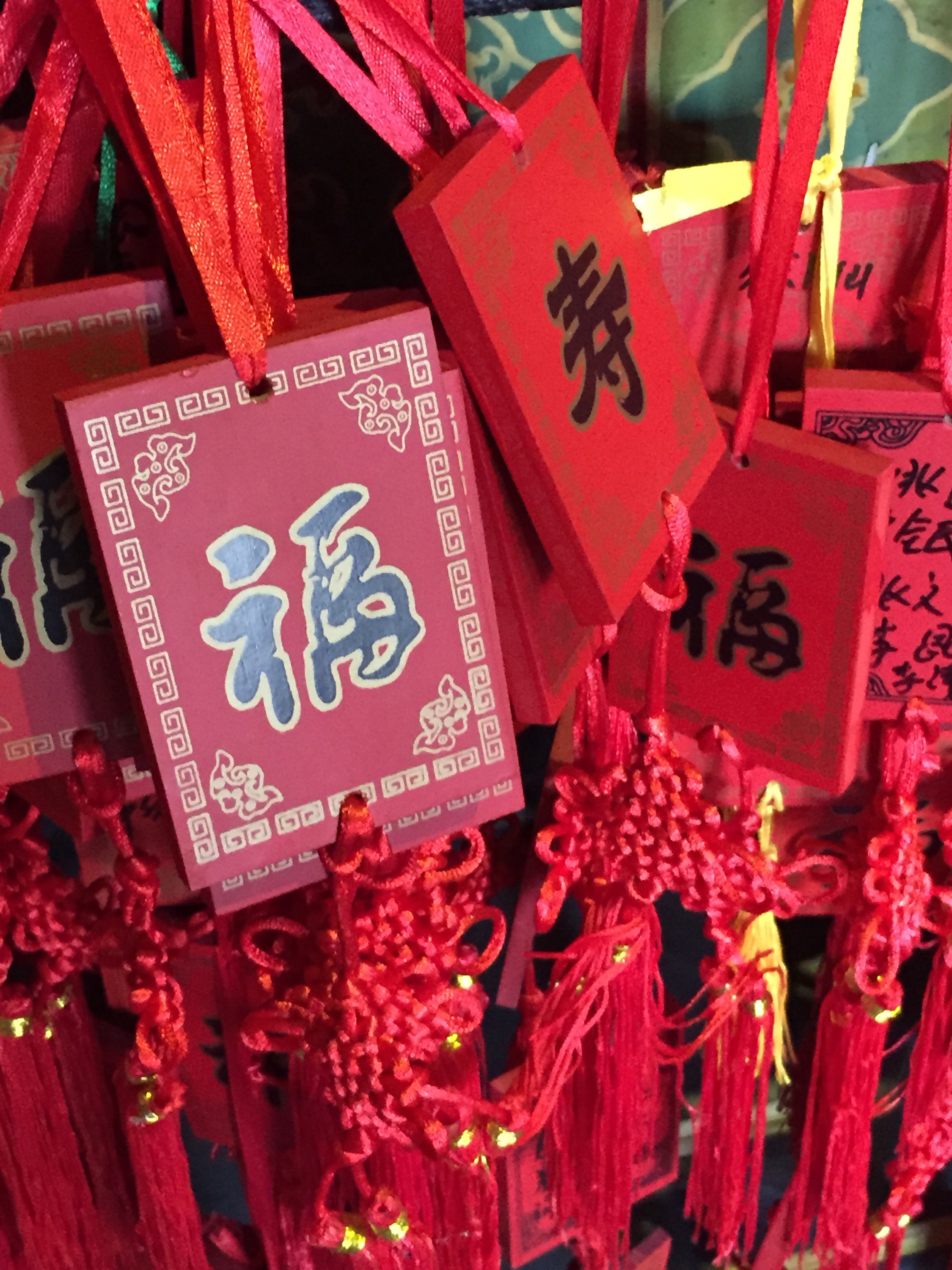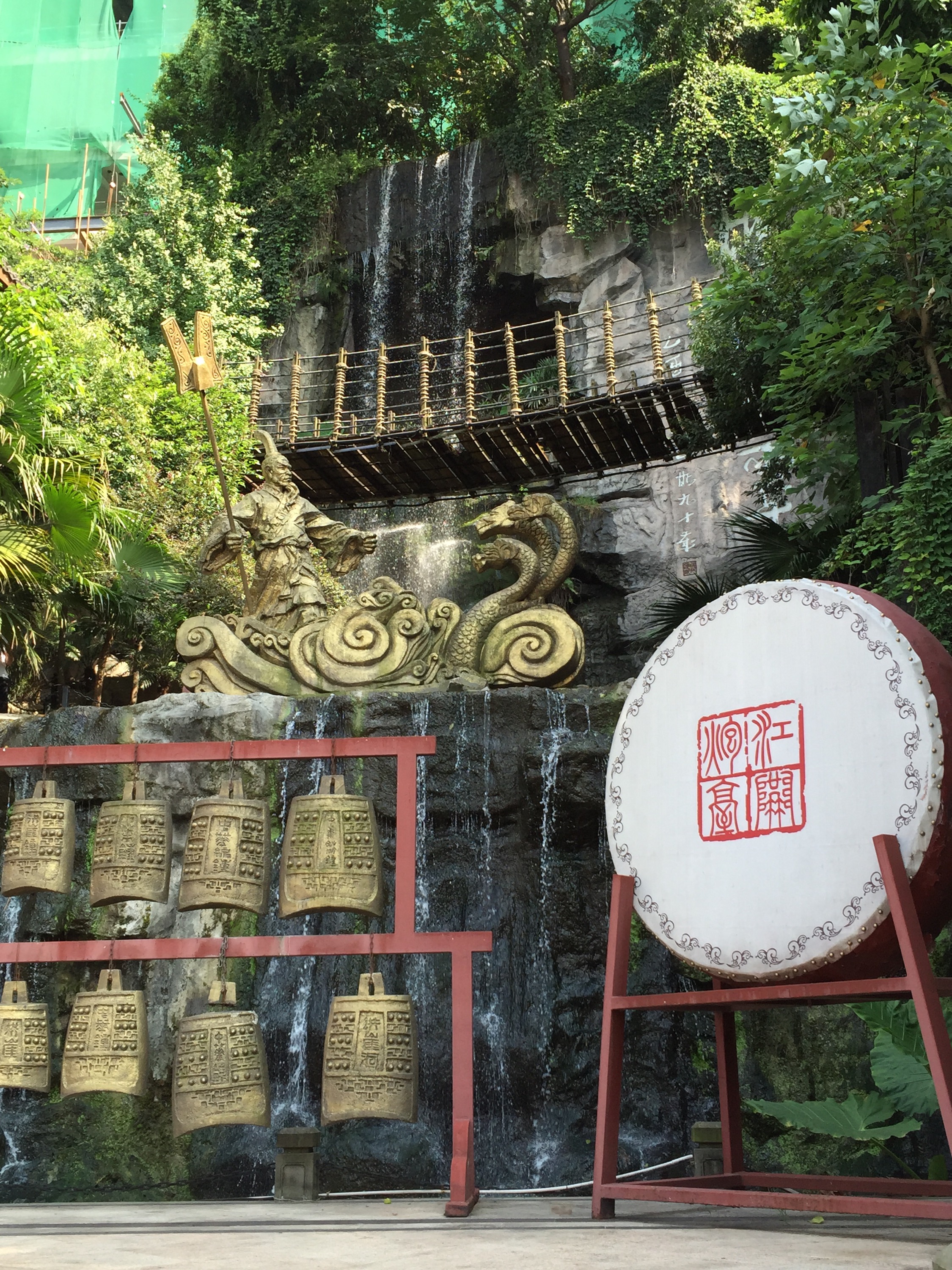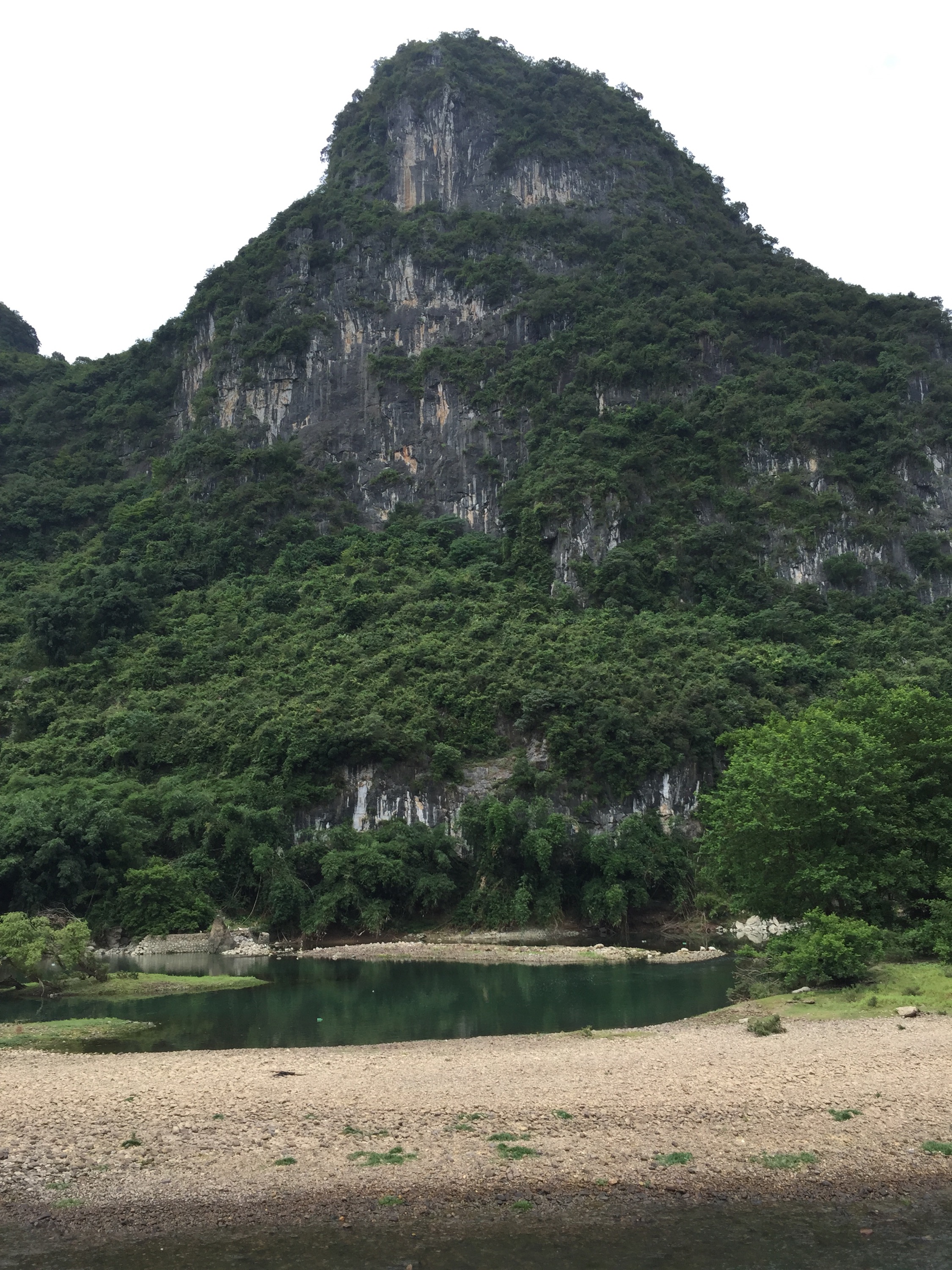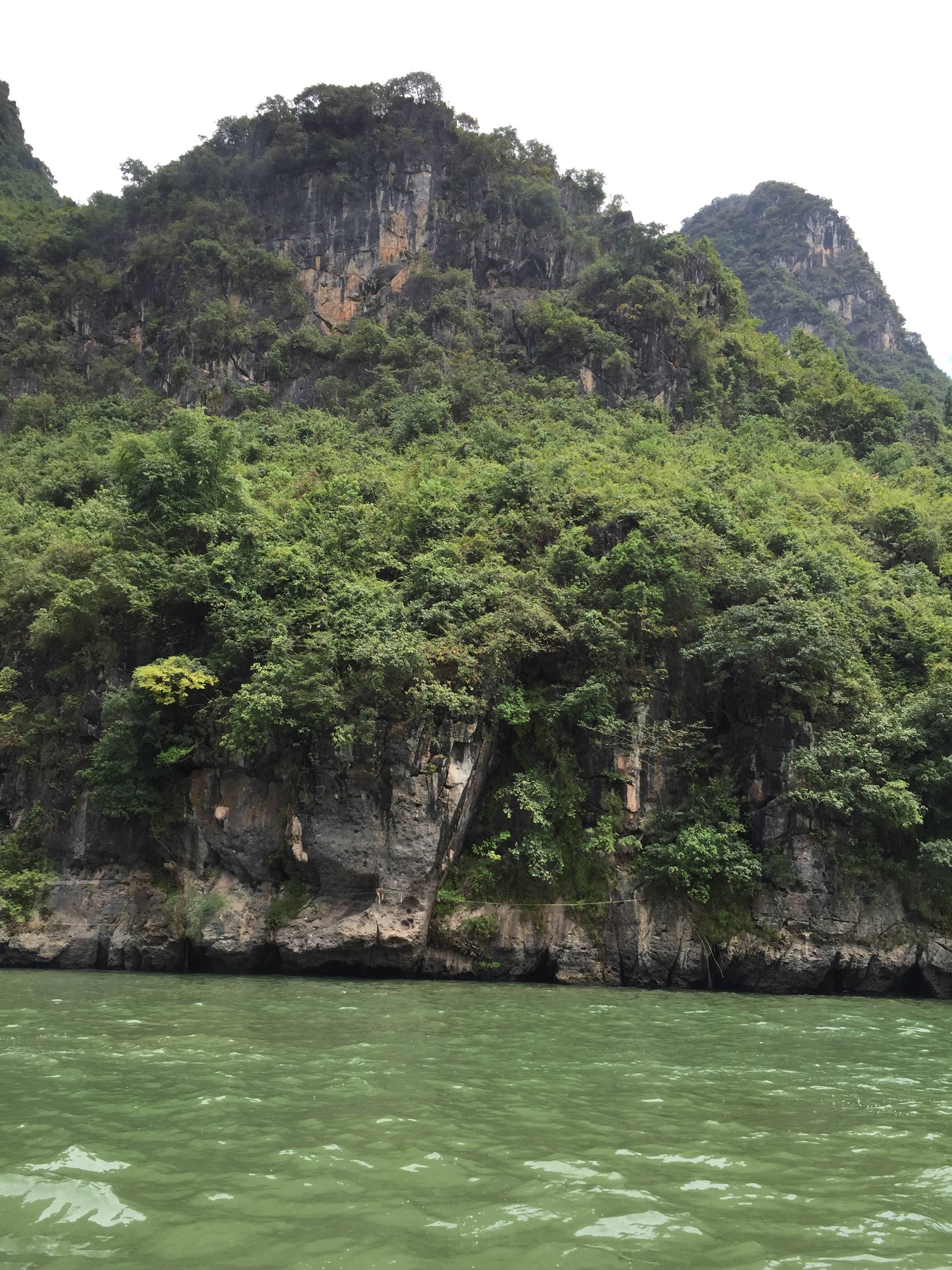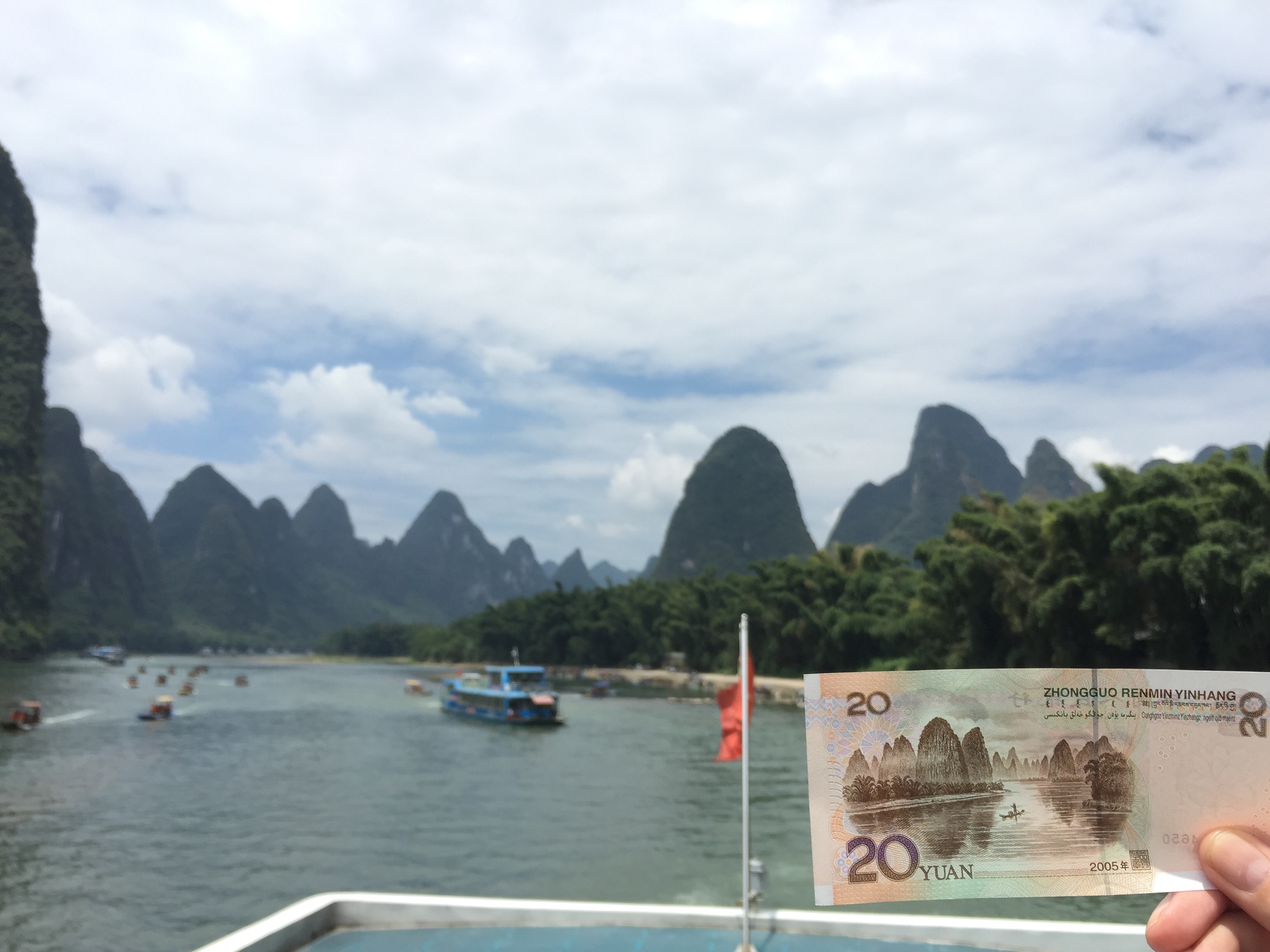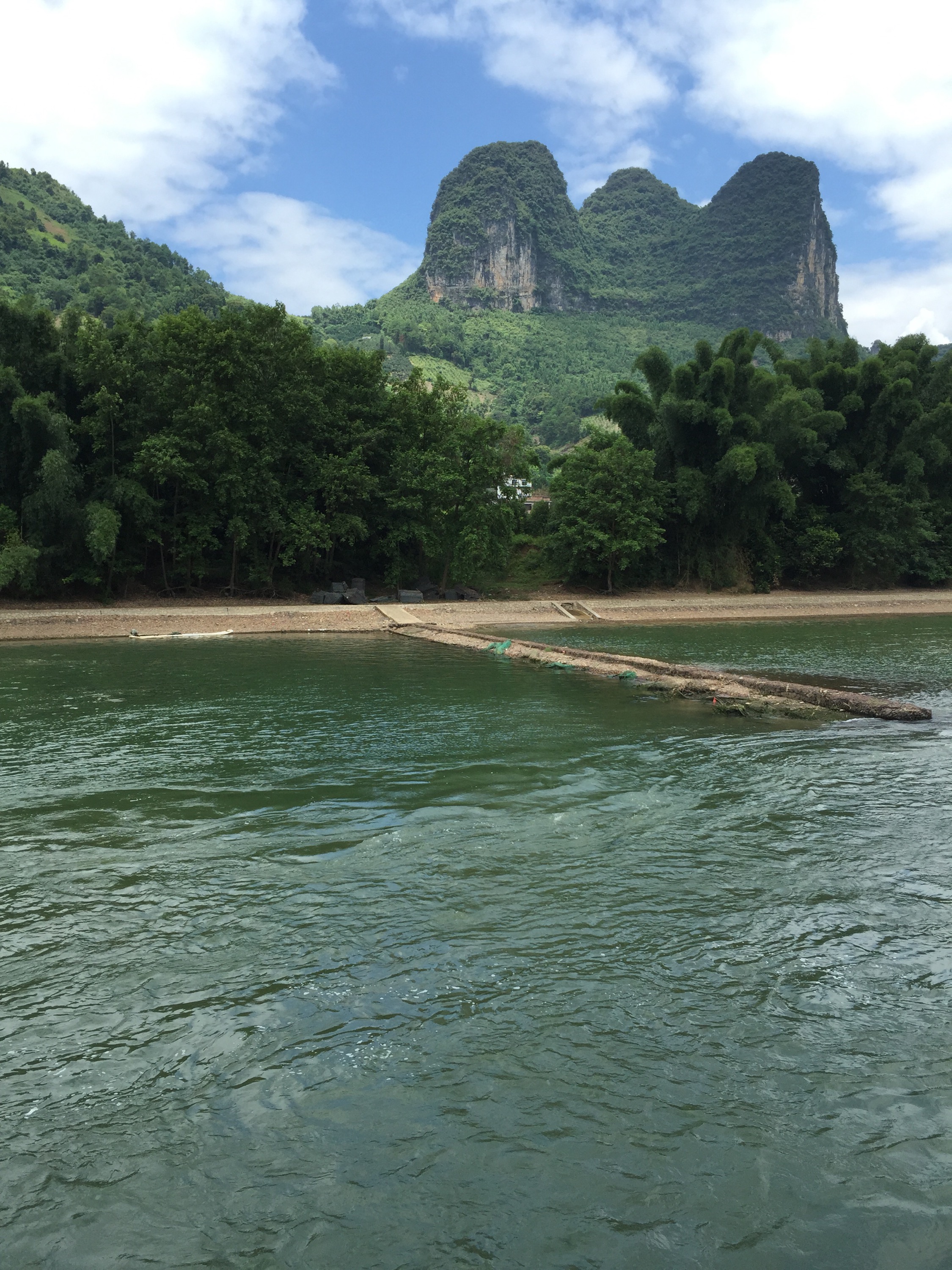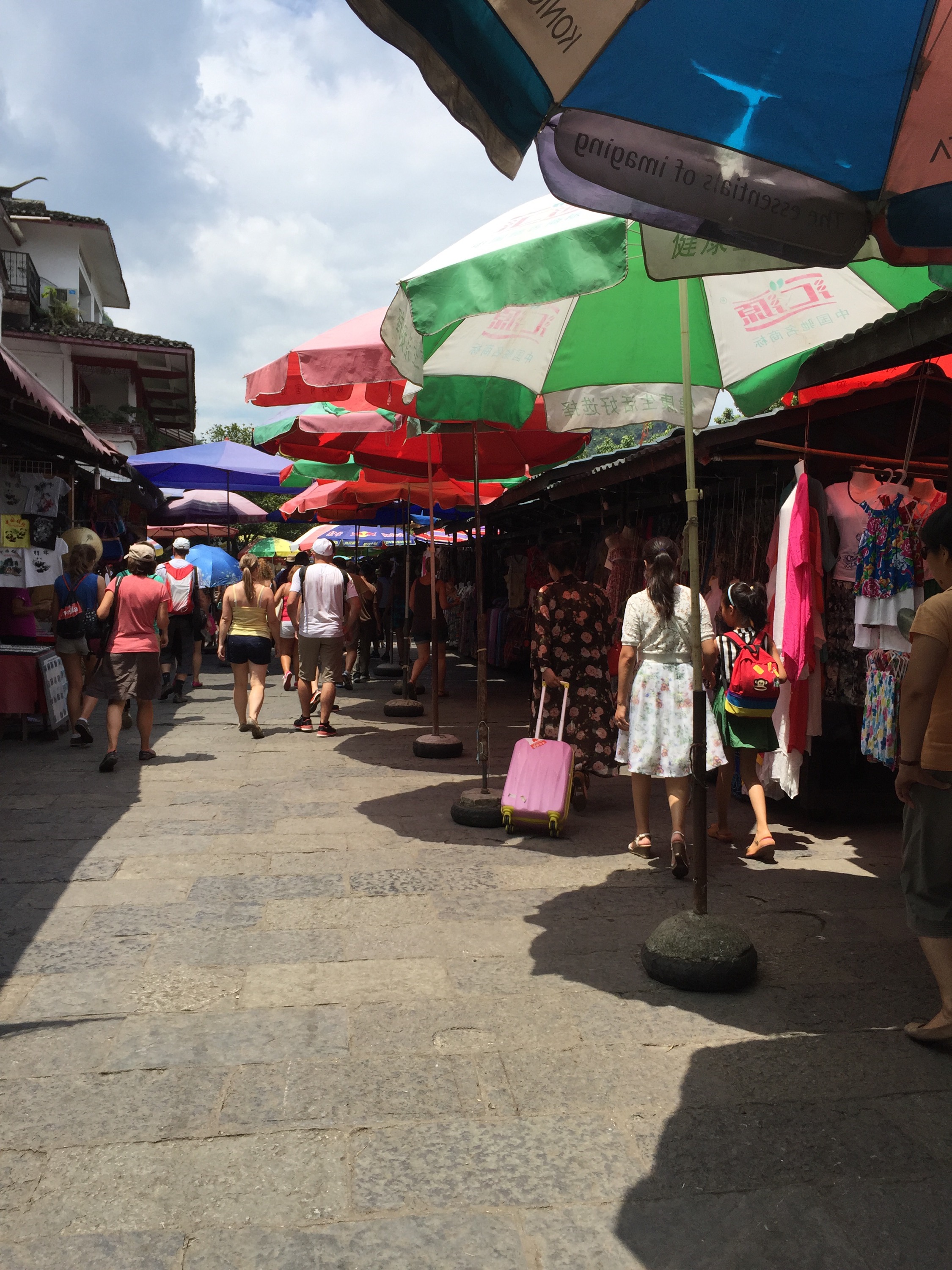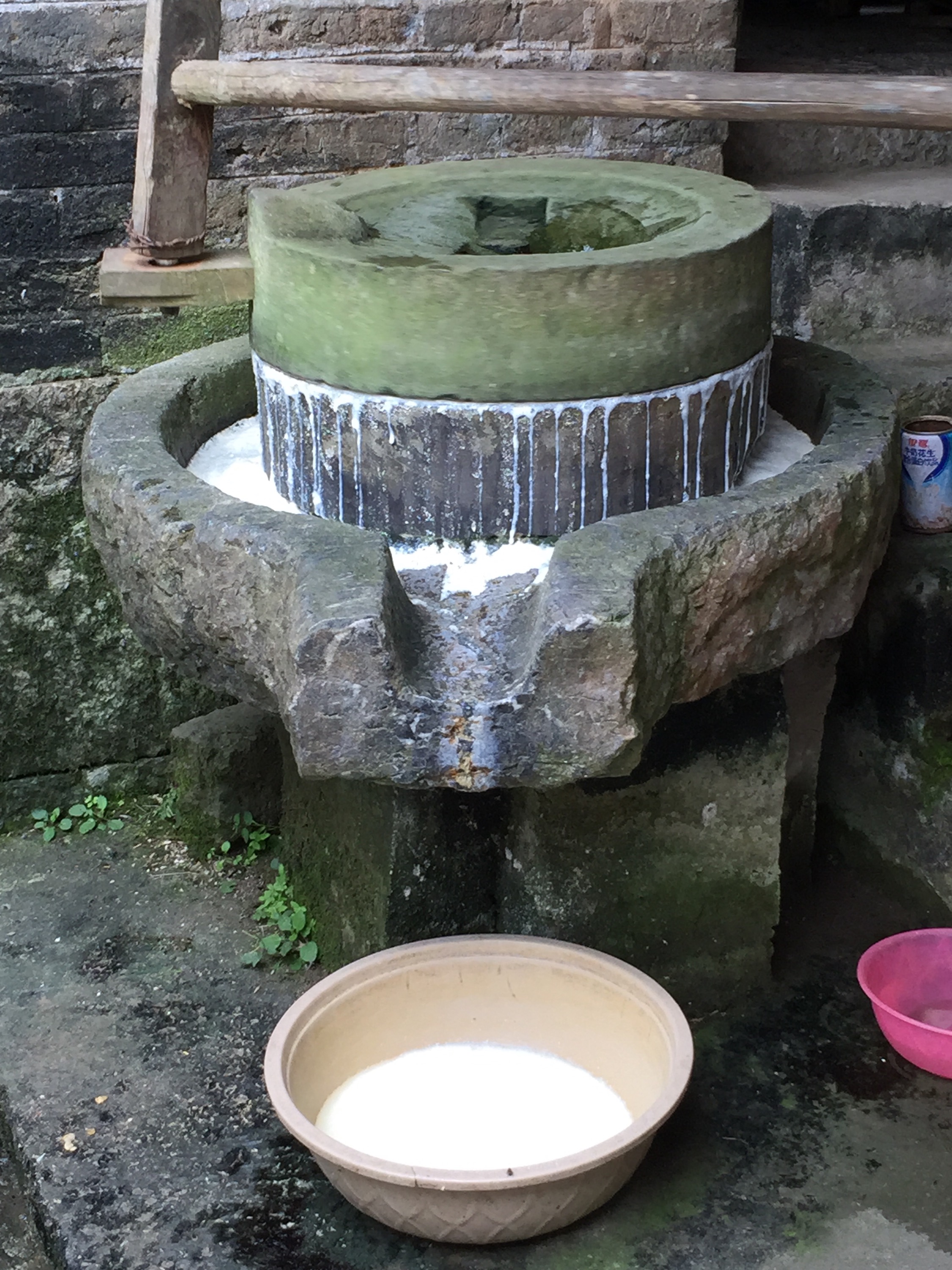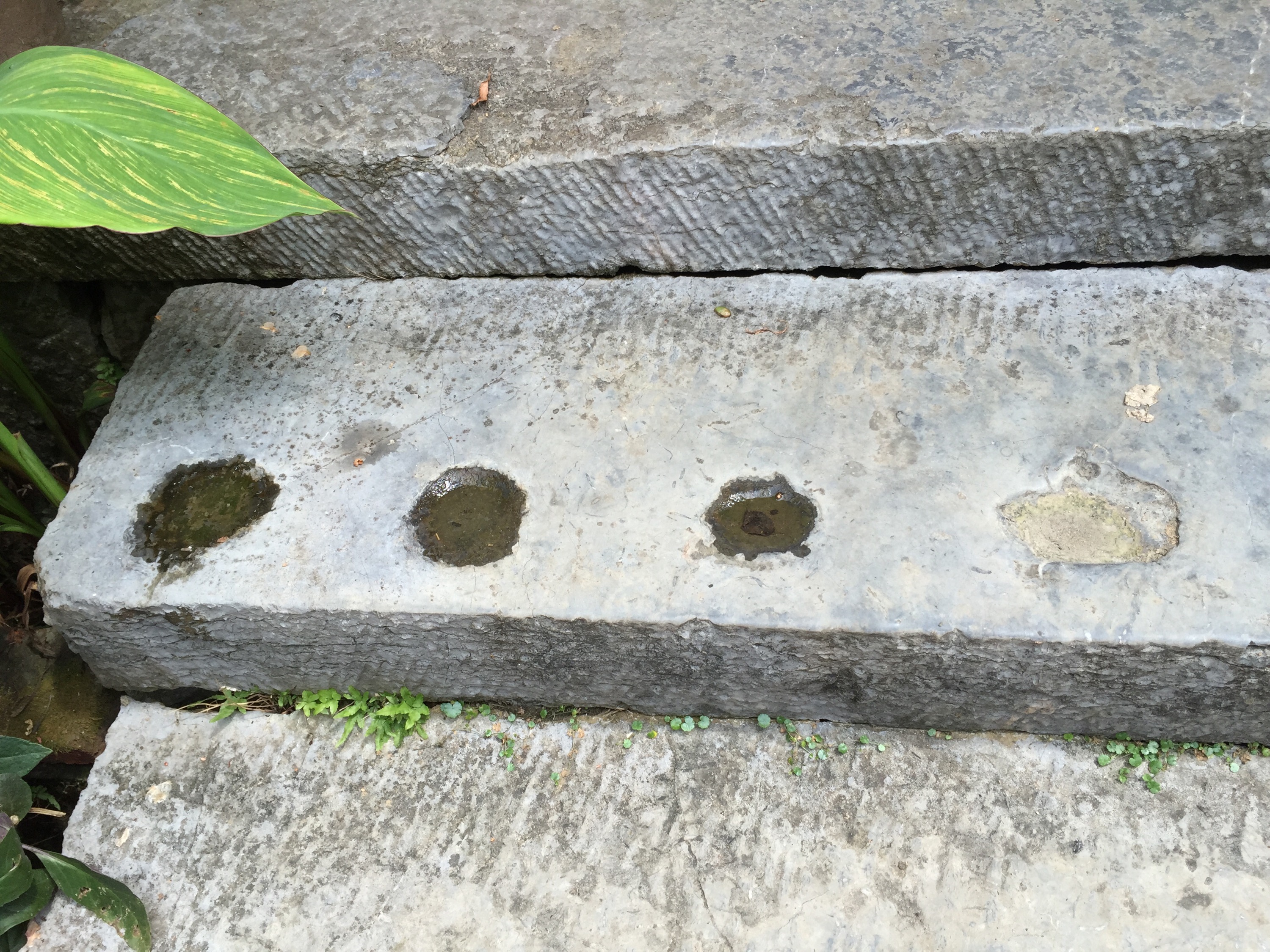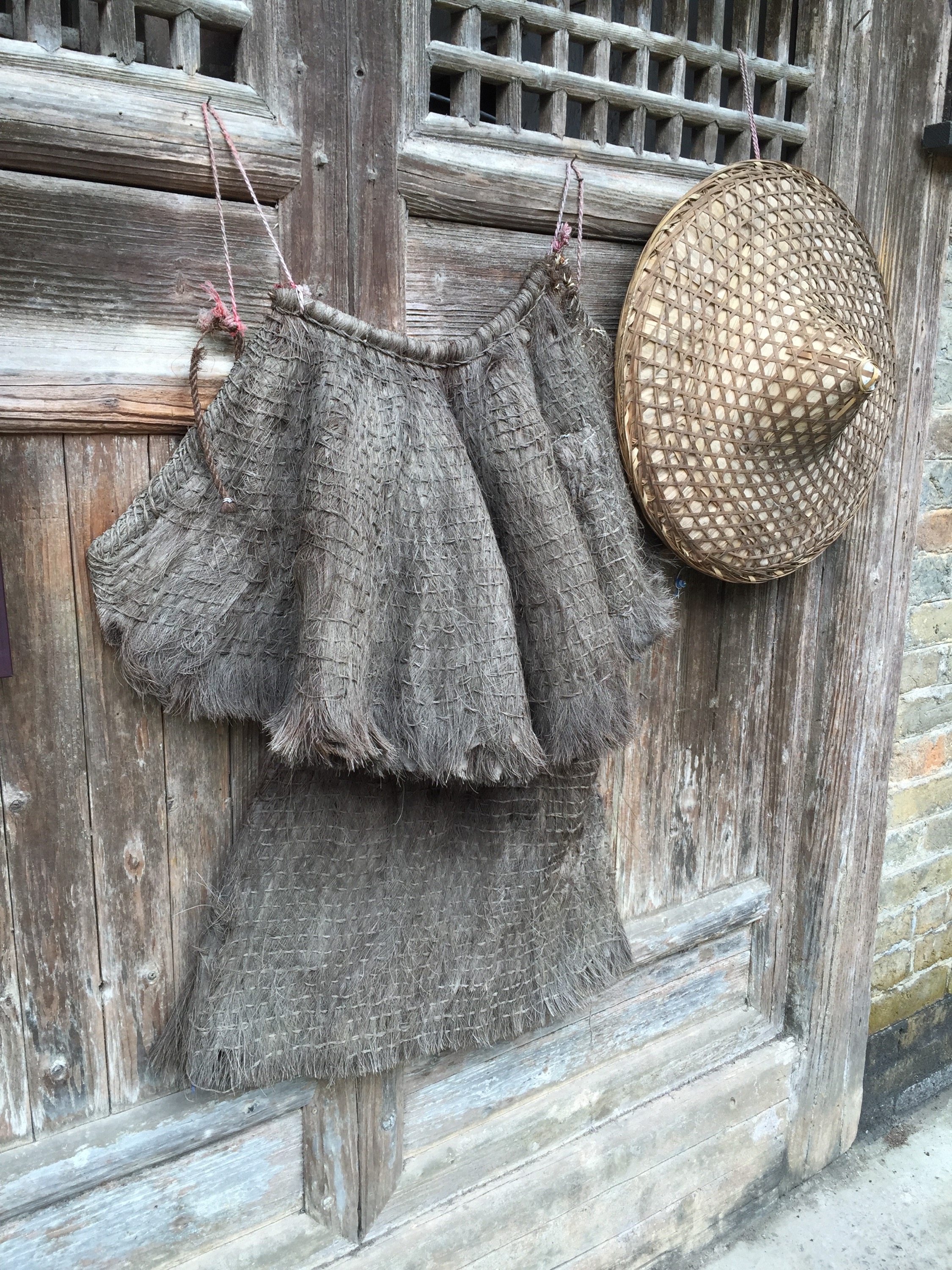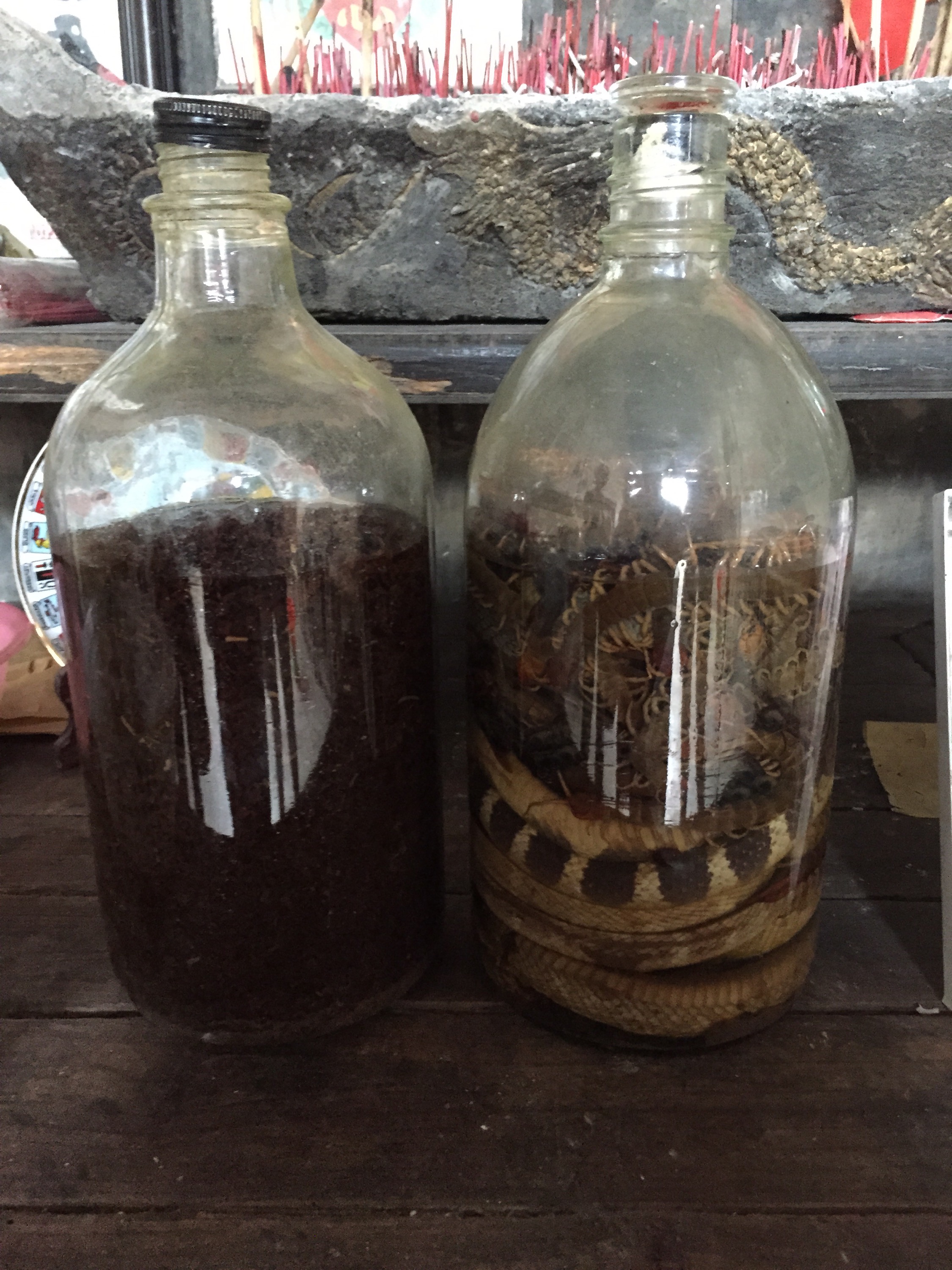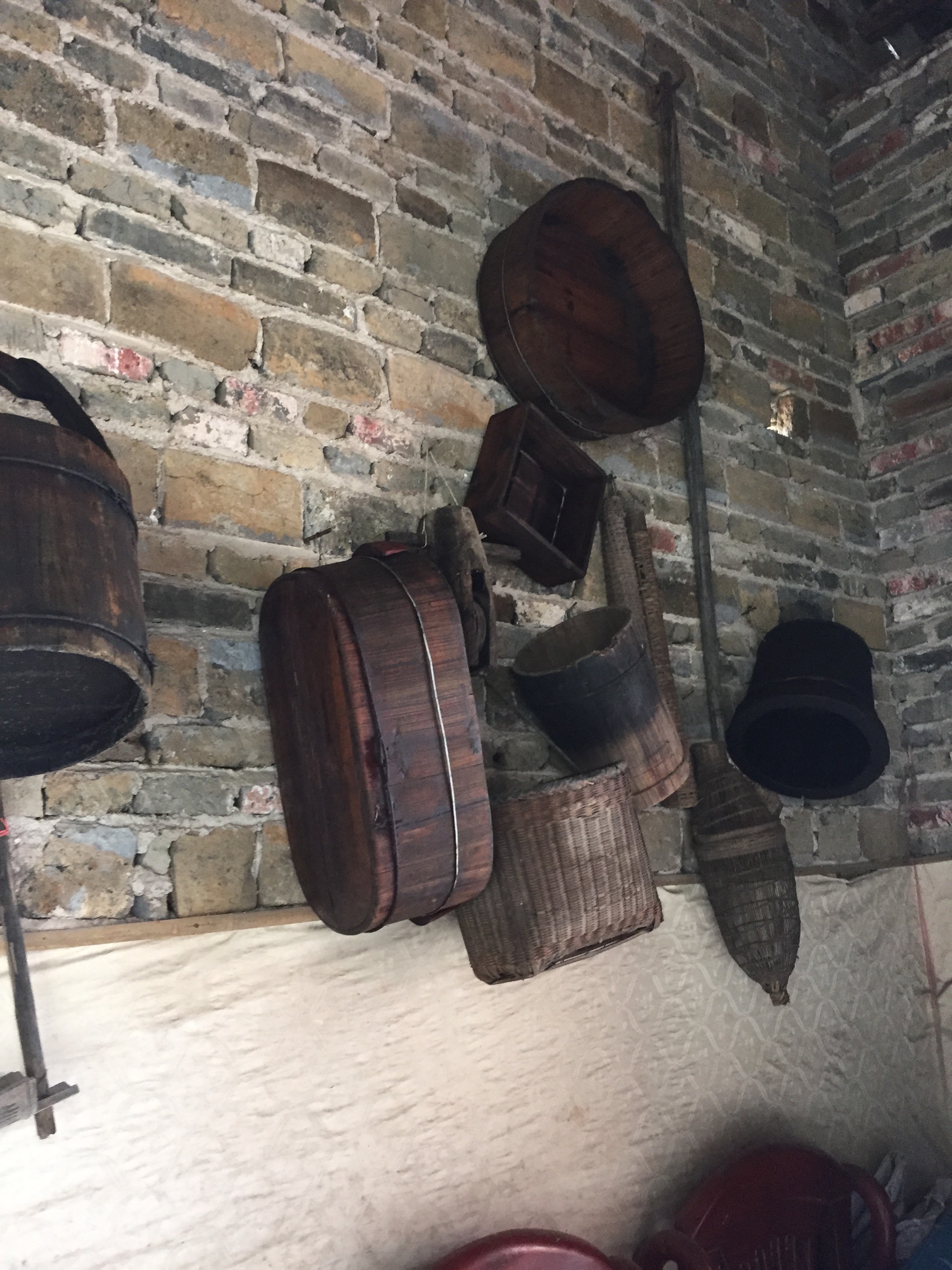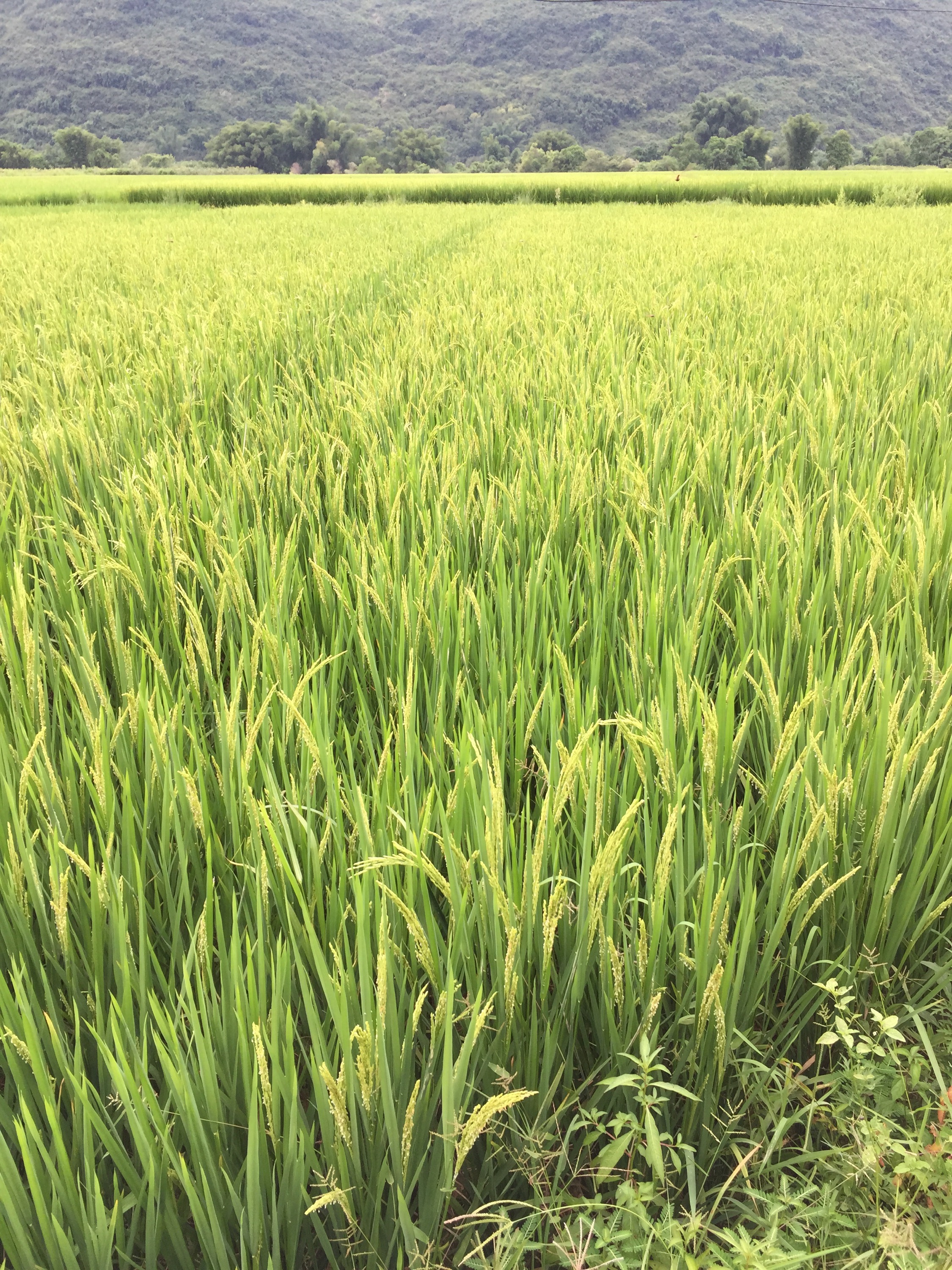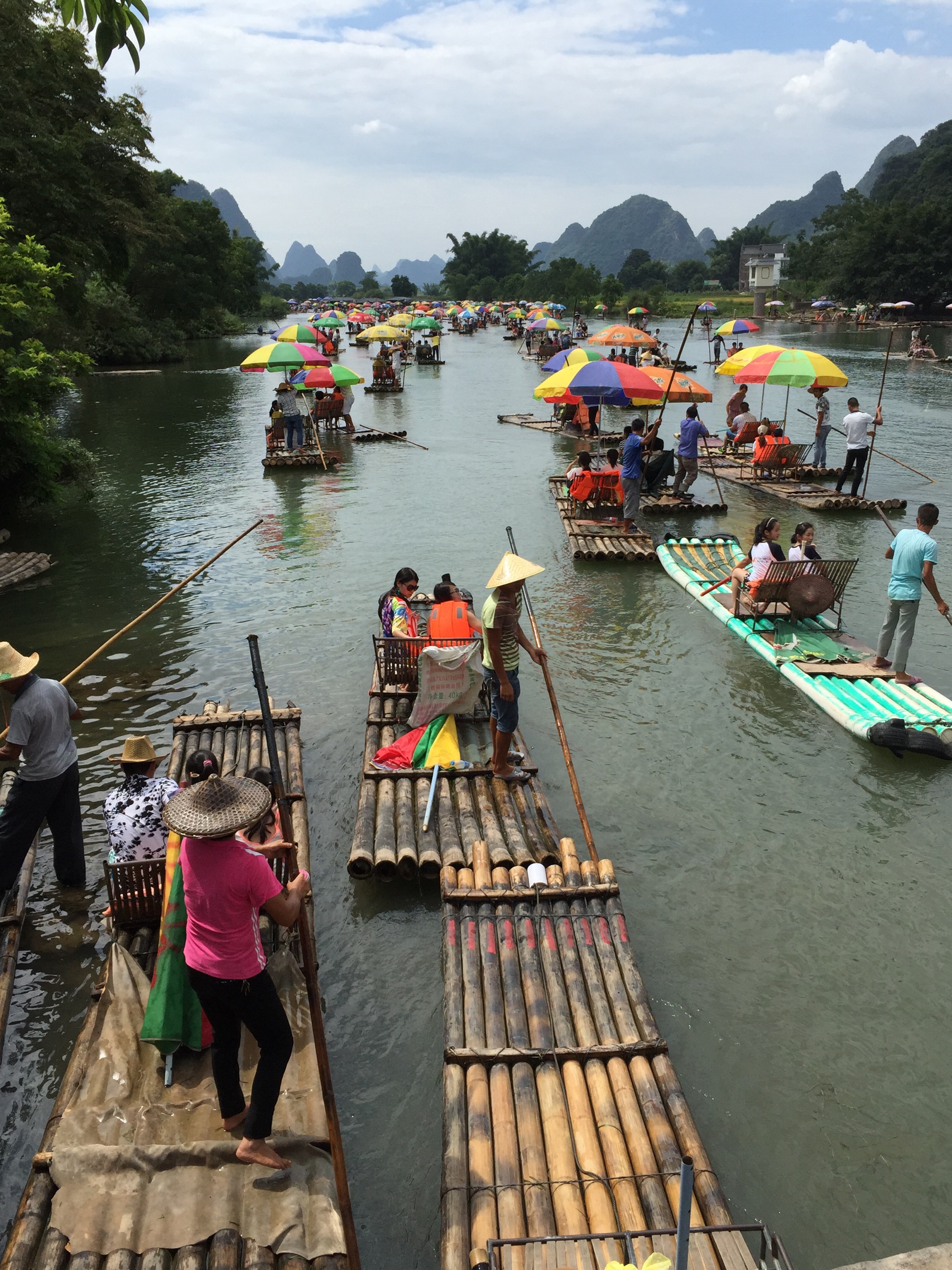This morning we had a nice late start which should have meant an opportunity to sleep in, but for some reason never works out that way. We had a private tour guide again in Shanghai… since leaving our group in Xian, we have had a private tour all the way through China really, which one one hand, has been excellent – we can be as flexible with the itinerary as we choose – but on the other hand, there are fewer people to hash over the things we saw and discovered during the day and when you have the guides entire attention there’s no zoning out looking at the scenery, you are being constantly engaged in conversation rather than listening to a lecture of sorts. We quite got used to our little group at the beginning of the tour and felt their absence quite a bit – especially on the Yangtze cruise.
 NB: It is actually raining in these photos, though you could be forgiven for thinking it’s smog given that most ogher places we went to were heavily polluted. Shanghai is probably the cleanest city we have visited in China.
NB: It is actually raining in these photos, though you could be forgiven for thinking it’s smog given that most ogher places we went to were heavily polluted. Shanghai is probably the cleanest city we have visited in China.
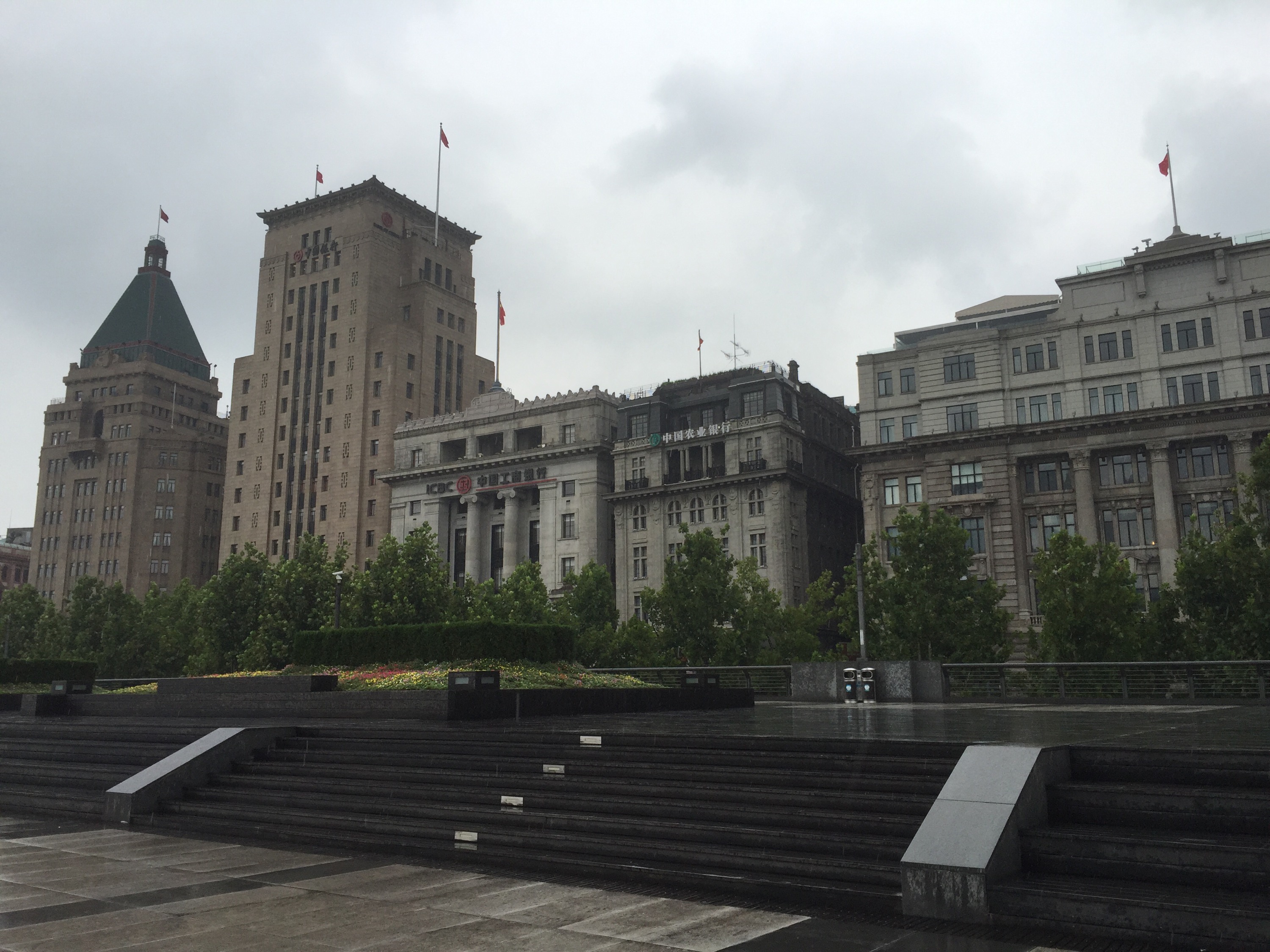
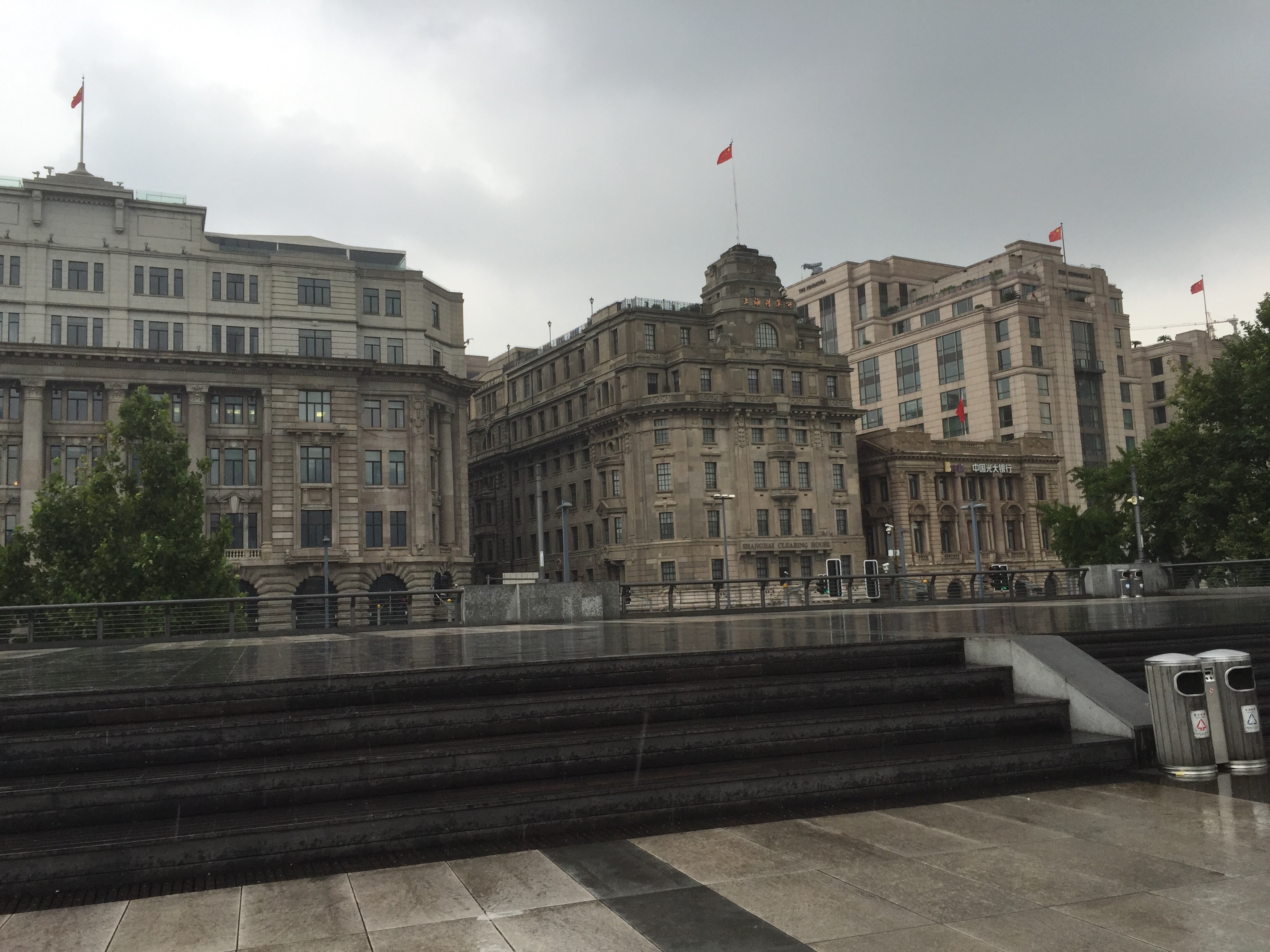 Anyway, this morning we were firstly off to The Bund, which literally means, ‘outer bank’ and is a waterfront area in central Shanghai. The area centres on a section of Zhongshan Road in the early Shanghai International Settlement. The Bund usually refers to the buildings and wharves on this section of the road, as well as some adjacent areas. It is one of the most famous tourist destinations in Shanghai for it’s architecture and for its exemplary display of Shanghai’s pride in preserving the old while embracing the new. On one side of the river is the older, traditional financial districts of Shanghai where building heights are regulated and the famous Peace Hotel resides, and on the other side of the river in this location, you can see the new Shanghai finance district with its impressive sky scrapers reaching up to 600+ meters into the skyline. It is really quite impressive, and apparently very much so when all lit up at night (we unfortunately won’t get a chance to see the area at night thanks to a stupidly early transit to the airport tomorrow, so I have pilfered a picture to add in of The Bund at night.
Anyway, this morning we were firstly off to The Bund, which literally means, ‘outer bank’ and is a waterfront area in central Shanghai. The area centres on a section of Zhongshan Road in the early Shanghai International Settlement. The Bund usually refers to the buildings and wharves on this section of the road, as well as some adjacent areas. It is one of the most famous tourist destinations in Shanghai for it’s architecture and for its exemplary display of Shanghai’s pride in preserving the old while embracing the new. On one side of the river is the older, traditional financial districts of Shanghai where building heights are regulated and the famous Peace Hotel resides, and on the other side of the river in this location, you can see the new Shanghai finance district with its impressive sky scrapers reaching up to 600+ meters into the skyline. It is really quite impressive, and apparently very much so when all lit up at night (we unfortunately won’t get a chance to see the area at night thanks to a stupidly early transit to the airport tomorrow, so I have pilfered a picture to add in of The Bund at night.

Near the Bund was a quality Jade Centre, we know a lot of the jade available in the tourist markets is not actually nephrite jade of jadeite jade at all, so people are purchasing inferior stone or completely faux jade. So we had asked Jake to take us to a reputable store – he chose the govt run Jade centre (given what we believe of the Chinese govt, it seemed an interesting choice, but ok). We were originally looking for some fu dog bookends to take home – in jade or white marble for the house (we usually buy just one really nice souvenir from any trip), but saw and really liked a nephrite jade dragon that will look very nice in the house. I forgot to take a picture of it before it was all wrapped up, so I will have to come back and edit one in here later. Mr K got a good deal from haggling with the manager – the Chinese tend to offer very favourable prices to their first customers of the morning, they believe it sets them up for a good day of trading. So we are very happy with our wash.
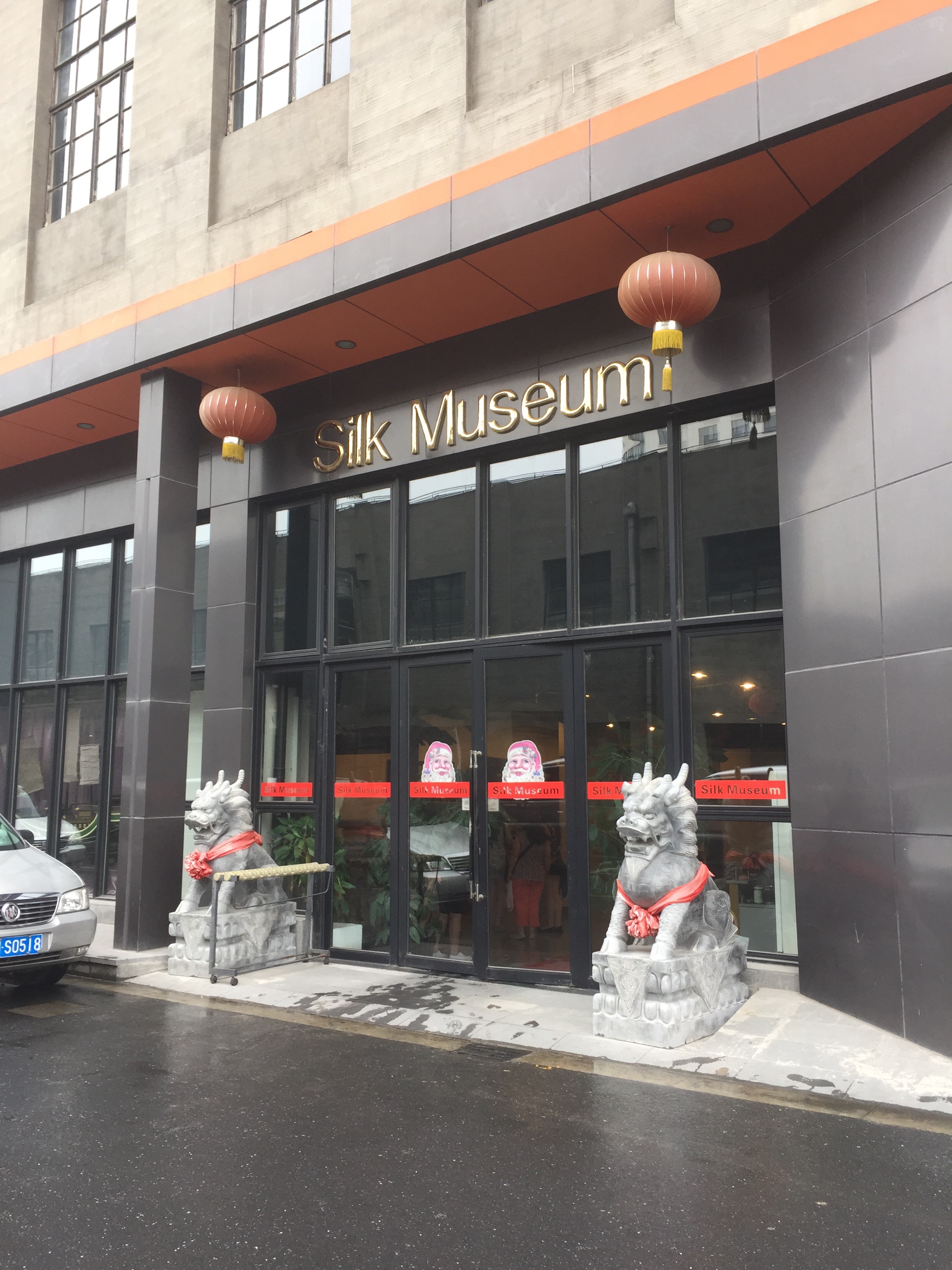 After the Bund we went to the Shanghai Silk Museum. Which I have to say was fascinating. Considering the long standing traditions of silk manufacture in China, and the importance of the Silk Road in trade with the West for the last thousand years or so, there has been very little mention of silk at all at our various stops so far. The Silk Museum is govt run, and starts with a display of some baby silk worms eating their mulberry leaves through to the process of the spinning the cocoons into thread. They showed us how the single cocoon provided a fine single thread of silk, and that double cocoons (with two pupae in them) have crisscrossed threads that are impossible to untangle. These double cocoons are used to make pillow and doona/duvet stuffing. Silk stuffed doonas are soft, lightweight and insulating, and have been very popular with wealthy Chinese for centuries. The cocoons are stretched by hand in layers to get the desired size and weight, it is really quite clever how they create these quilts.
After the Bund we went to the Shanghai Silk Museum. Which I have to say was fascinating. Considering the long standing traditions of silk manufacture in China, and the importance of the Silk Road in trade with the West for the last thousand years or so, there has been very little mention of silk at all at our various stops so far. The Silk Museum is govt run, and starts with a display of some baby silk worms eating their mulberry leaves through to the process of the spinning the cocoons into thread. They showed us how the single cocoon provided a fine single thread of silk, and that double cocoons (with two pupae in them) have crisscrossed threads that are impossible to untangle. These double cocoons are used to make pillow and doona/duvet stuffing. Silk stuffed doonas are soft, lightweight and insulating, and have been very popular with wealthy Chinese for centuries. The cocoons are stretched by hand in layers to get the desired size and weight, it is really quite clever how they create these quilts.
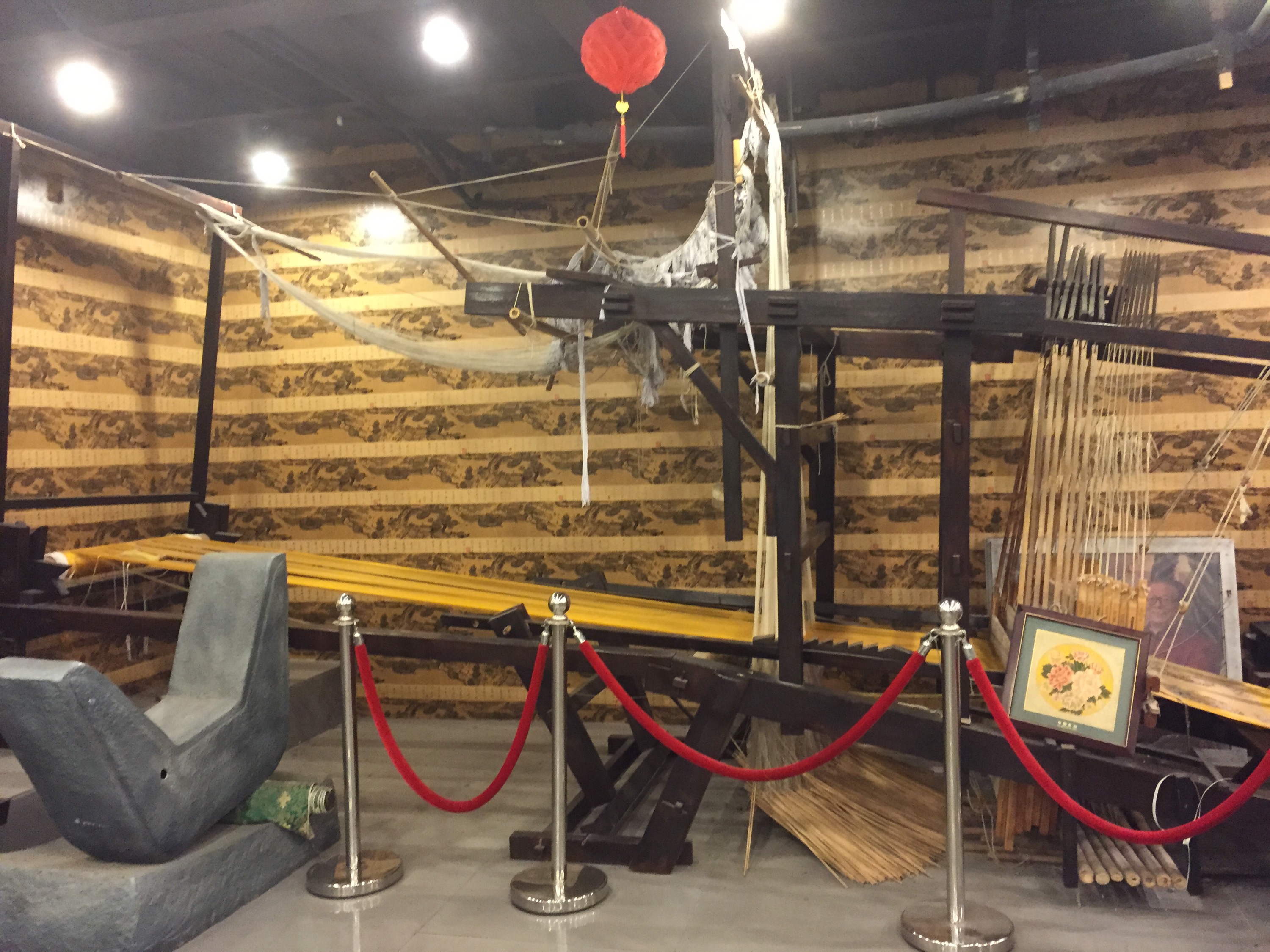 The Silk Museum had the most impressive gift shop – if I had the luggage allowance, I would have come home with a new silk stuffed doona, a woven silk cover for it, set of silk sheets and pillowcases to match and slept like an empress when I got home!
The Silk Museum had the most impressive gift shop – if I had the luggage allowance, I would have come home with a new silk stuffed doona, a woven silk cover for it, set of silk sheets and pillowcases to match and slept like an empress when I got home! 
 Next we were onto the Old Town. I wasn’t sure what to expect other than we were going to see the Yu Gardens (Yu = ‘make parents happy’) that was first built in 1559 during the Ming Dynasty by the Pan Family (Pan Yunduan) to be of comfort to his father in his retirement and old age. The garden was one of the most extensive and therefore most prestigious of its type in Shanghai. The garden is actually build around the Pan home which has meeting houses and living quarters in among the garden, which consists of large koi ponds, stone bridges and walkways and expensive decorative limestone pieces.
Next we were onto the Old Town. I wasn’t sure what to expect other than we were going to see the Yu Gardens (Yu = ‘make parents happy’) that was first built in 1559 during the Ming Dynasty by the Pan Family (Pan Yunduan) to be of comfort to his father in his retirement and old age. The garden was one of the most extensive and therefore most prestigious of its type in Shanghai. The garden is actually build around the Pan home which has meeting houses and living quarters in among the garden, which consists of large koi ponds, stone bridges and walkways and expensive decorative limestone pieces.
 The most notable of the limestone is a stone named the “Yu Ling Long” (“The Exquisite Jade Rock” – its not jade?), which was apparently destined for the Imperial Palace in Beijing, but was lost in a shipwreck. The stone was at some point recovered, but it remained concealed so it did not have to be returned to the imperial family. At some point it came to the Pan family as part of a dowry of a woman marrying into the family and it has been much prized ever since. Apparently it has 72 holes in it which make a beautiful waterfall when it rains, and if incense is lit at it’s base, the holes bloom the smoke into a beautiful flower.
The most notable of the limestone is a stone named the “Yu Ling Long” (“The Exquisite Jade Rock” – its not jade?), which was apparently destined for the Imperial Palace in Beijing, but was lost in a shipwreck. The stone was at some point recovered, but it remained concealed so it did not have to be returned to the imperial family. At some point it came to the Pan family as part of a dowry of a woman marrying into the family and it has been much prized ever since. Apparently it has 72 holes in it which make a beautiful waterfall when it rains, and if incense is lit at it’s base, the holes bloom the smoke into a beautiful flower.
 There were many beautiful things about this garden which is considered one of the most beautiful in all China, I loved the 9 turn bridge, where you entered towards the building past a 400 year old tea house on a bridge over a canal that has 9 right angle turns on it. There is also a lovely romantic walkway where men walk down the left, and ladies walk down the right with various shaped window frames in between the walkway so that the ladies could be seen ‘framed’ like paintings for conversations on either side of the walkways. There were round arches (for heaven), square arches (for earth), pebble stone courtyards to massage the feet and lovely spaces to sit and enjoy the breeze. Oh to be wealthy and have loads of space!
There were many beautiful things about this garden which is considered one of the most beautiful in all China, I loved the 9 turn bridge, where you entered towards the building past a 400 year old tea house on a bridge over a canal that has 9 right angle turns on it. There is also a lovely romantic walkway where men walk down the left, and ladies walk down the right with various shaped window frames in between the walkway so that the ladies could be seen ‘framed’ like paintings for conversations on either side of the walkways. There were round arches (for heaven), square arches (for earth), pebble stone courtyards to massage the feet and lovely spaces to sit and enjoy the breeze. Oh to be wealthy and have loads of space! 
 After stepping out of the lovely garden, we went to do a bit of shopping in the Old Town. Now this is Tourist Central with a capital ‘T’. There were so many people there, 99% of them domestic Chinese tourists, it was hard to get through the press to get to see any shops. The area has all traditional style buildings and they are selling everything – jade (?), chopsticks, fans, calligraphy equipment, knock off handbags, watches, and electronics, bangles, beads, trinkets, toys, a million types of tea, local delicacies, silk, more pashmina!, knick knacks, dragon everythings, fu dog everythings, all Chinese fun shit all the time. So much Mao stuff, little Red Cookbooks. You name it.
After stepping out of the lovely garden, we went to do a bit of shopping in the Old Town. Now this is Tourist Central with a capital ‘T’. There were so many people there, 99% of them domestic Chinese tourists, it was hard to get through the press to get to see any shops. The area has all traditional style buildings and they are selling everything – jade (?), chopsticks, fans, calligraphy equipment, knock off handbags, watches, and electronics, bangles, beads, trinkets, toys, a million types of tea, local delicacies, silk, more pashmina!, knick knacks, dragon everythings, fu dog everythings, all Chinese fun shit all the time. So much Mao stuff, little Red Cookbooks. You name it.
 There was even a couple of stores selling ivory products! I found it hard to hide my horror but there they were on the high tourist street. The place was busy and vibrant, with so much going on but the crush of people was overwhelming, and with so many of them being from the rural country towns, my pale complexion was attracting a lot of unwanted attention again – which tends to just get me flustered and go into ‘get out of here’ mode. We did a little bit of shopping and then bailed to go find lunch.
There was even a couple of stores selling ivory products! I found it hard to hide my horror but there they were on the high tourist street. The place was busy and vibrant, with so much going on but the crush of people was overwhelming, and with so many of them being from the rural country towns, my pale complexion was attracting a lot of unwanted attention again – which tends to just get me flustered and go into ‘get out of here’ mode. We did a little bit of shopping and then bailed to go find lunch.
insert *a weird lunch experience, where several items we ordered we were later told were not available, we were given things we didn’t order, two warm beers, a few screaming children, a family of six staring at me for the duration and a surly waitress later* here
With a stupid o’clock flight to deal with tomorrow (Who booked this shit? Oh right, that was me – before I knew Shanghai was over an hour from the airport in good traffic) and luggage to rationalize, we head back to our hotel for the afternoon to get our shit together… tomorow: HONG KONG!
Where I am sincerely hoping one can get a decent cup of tea. 

